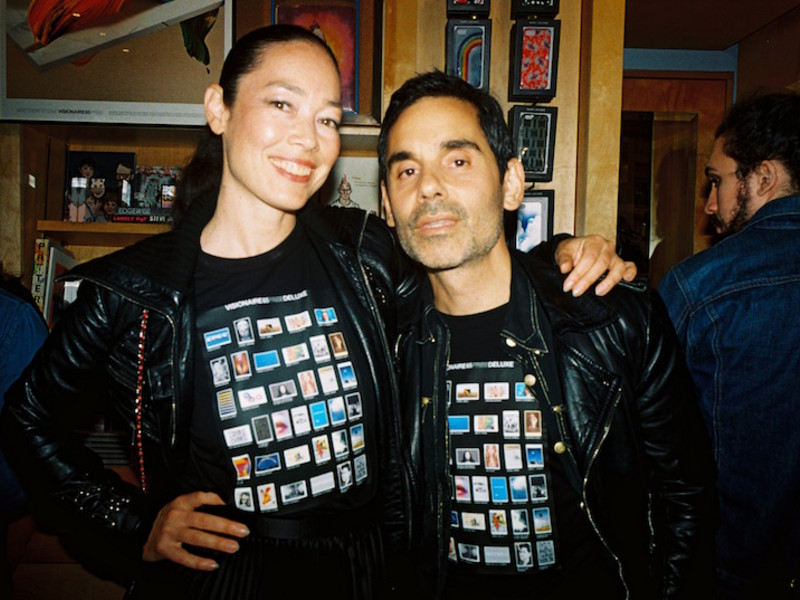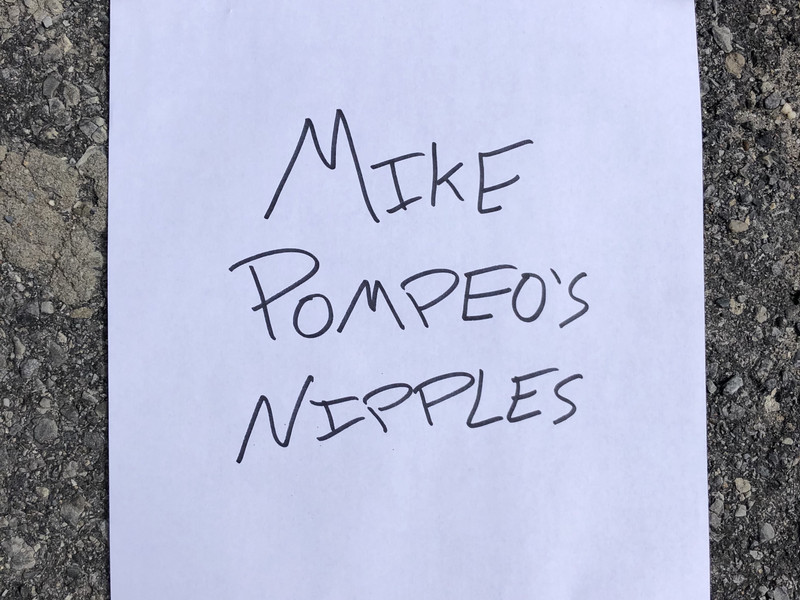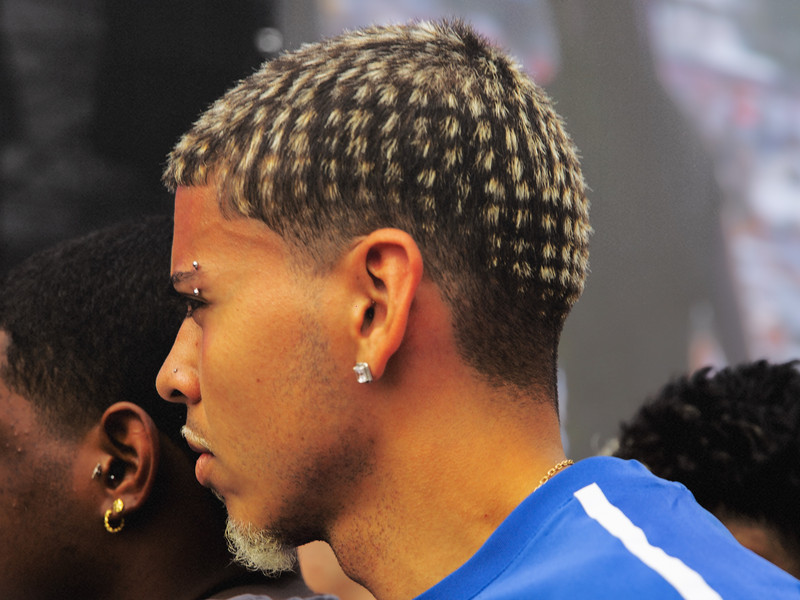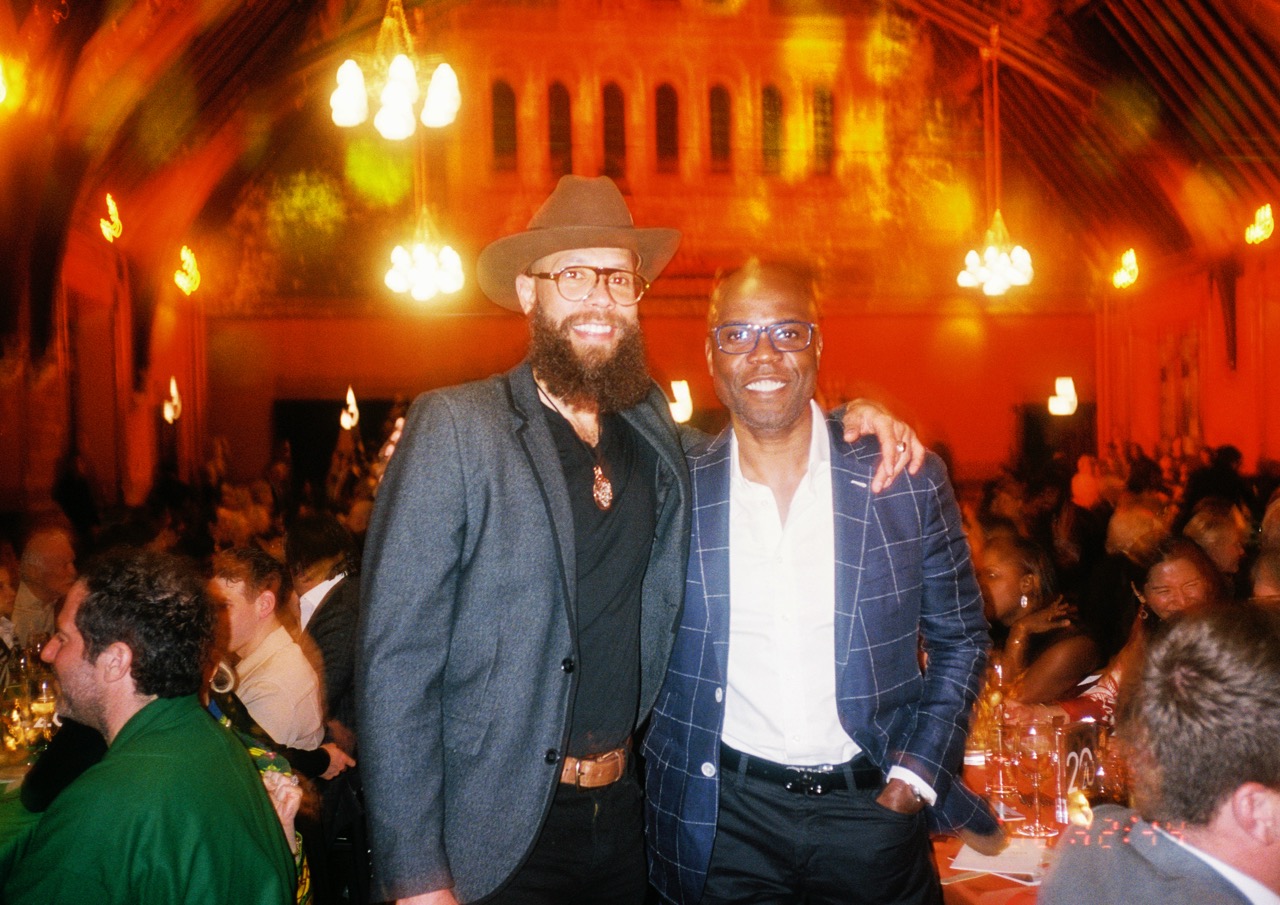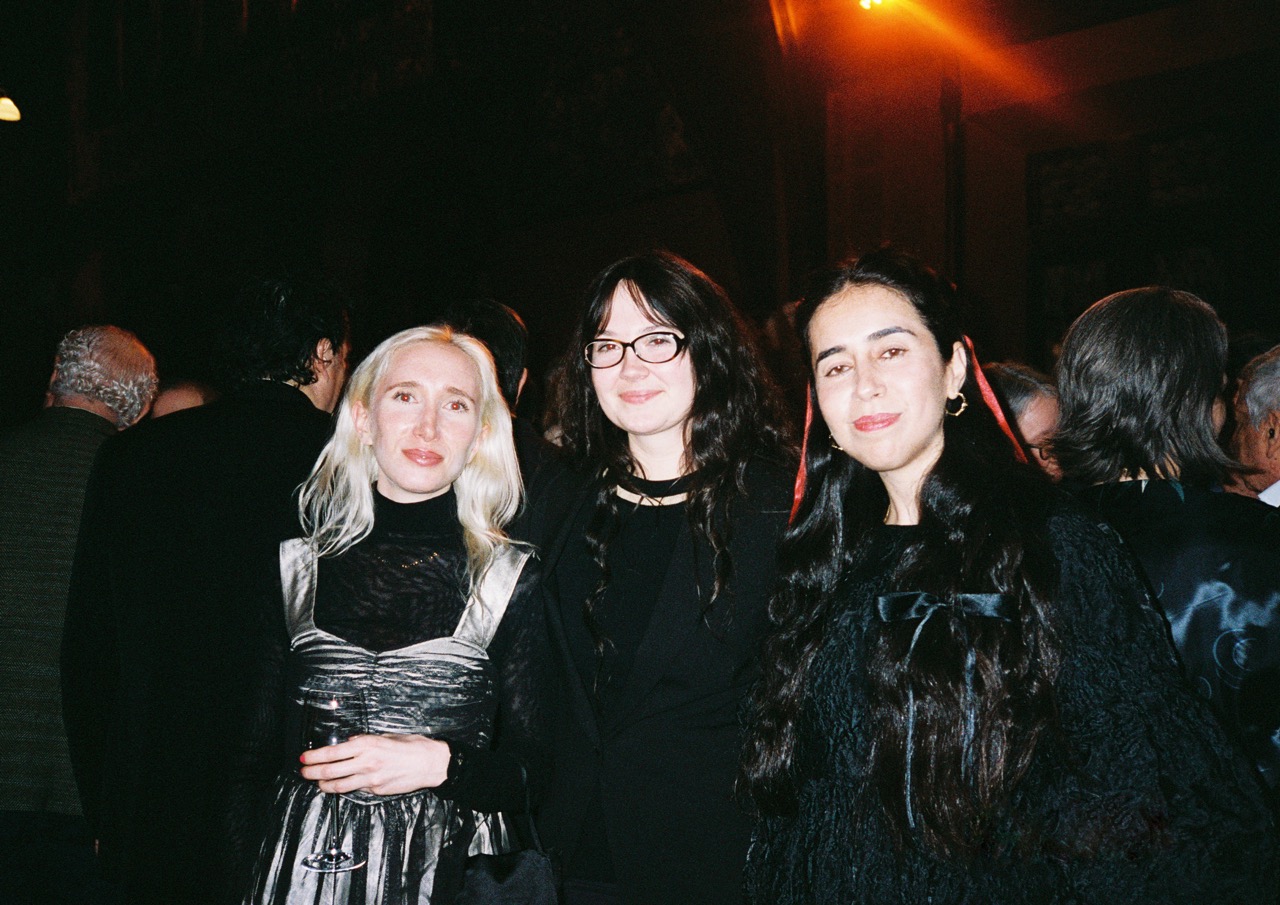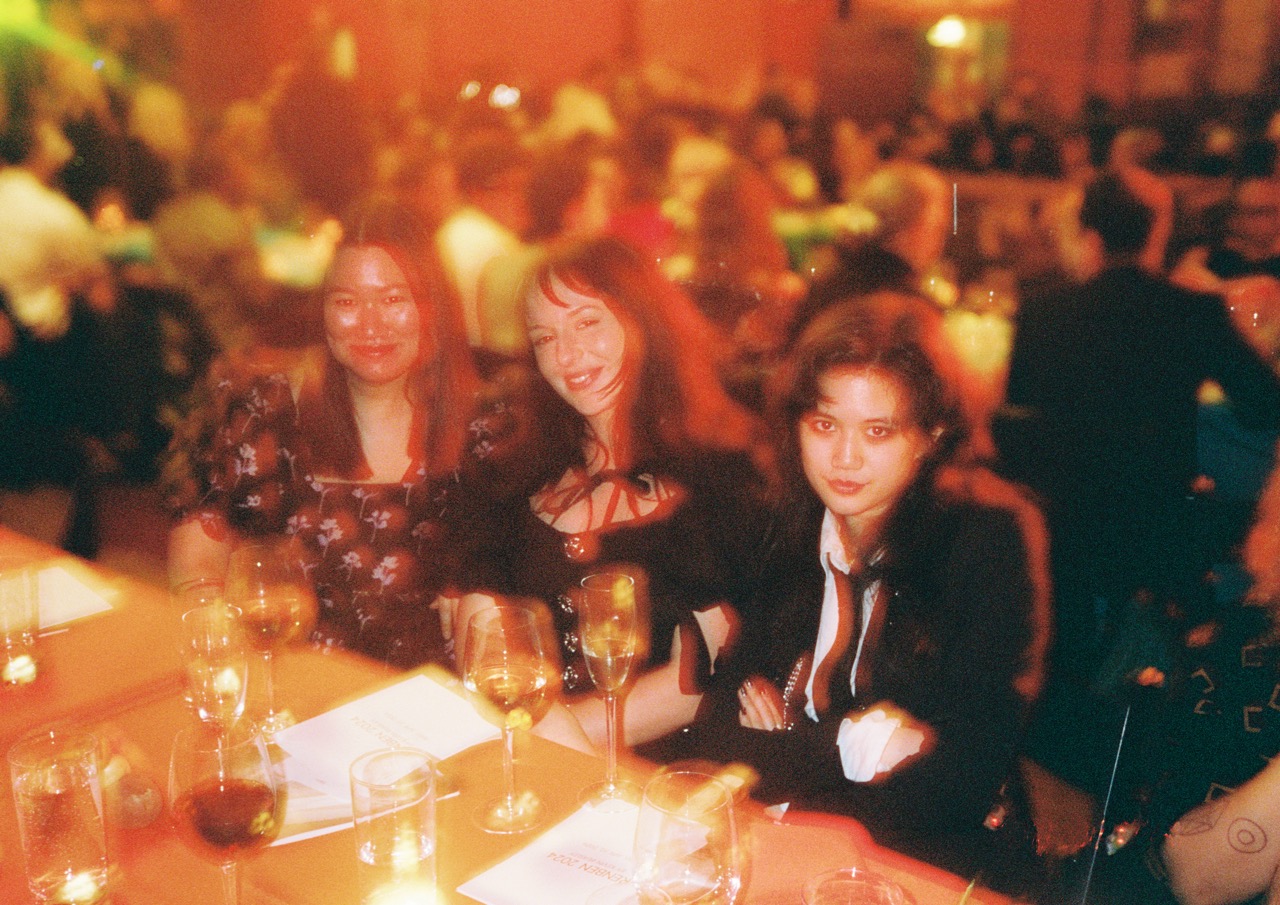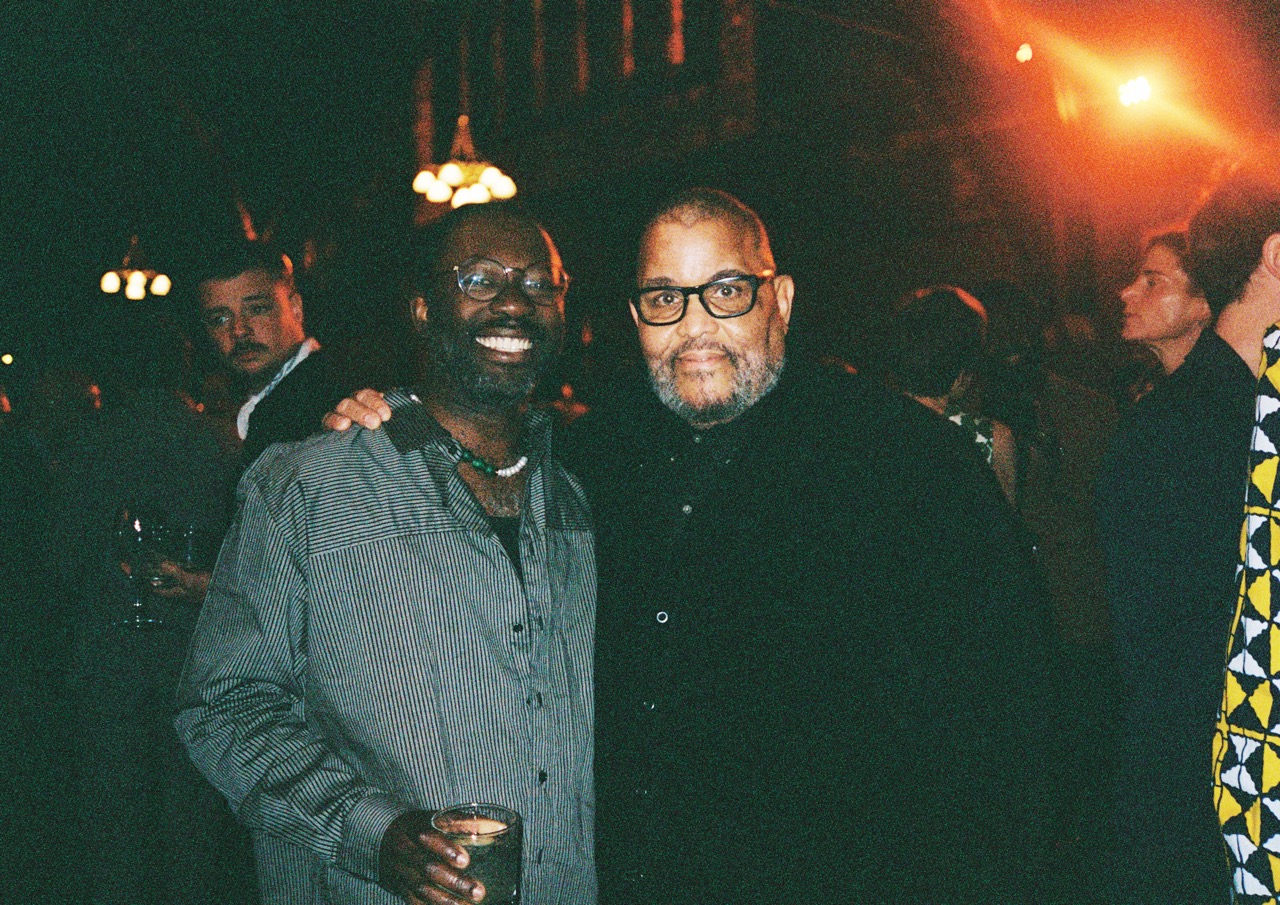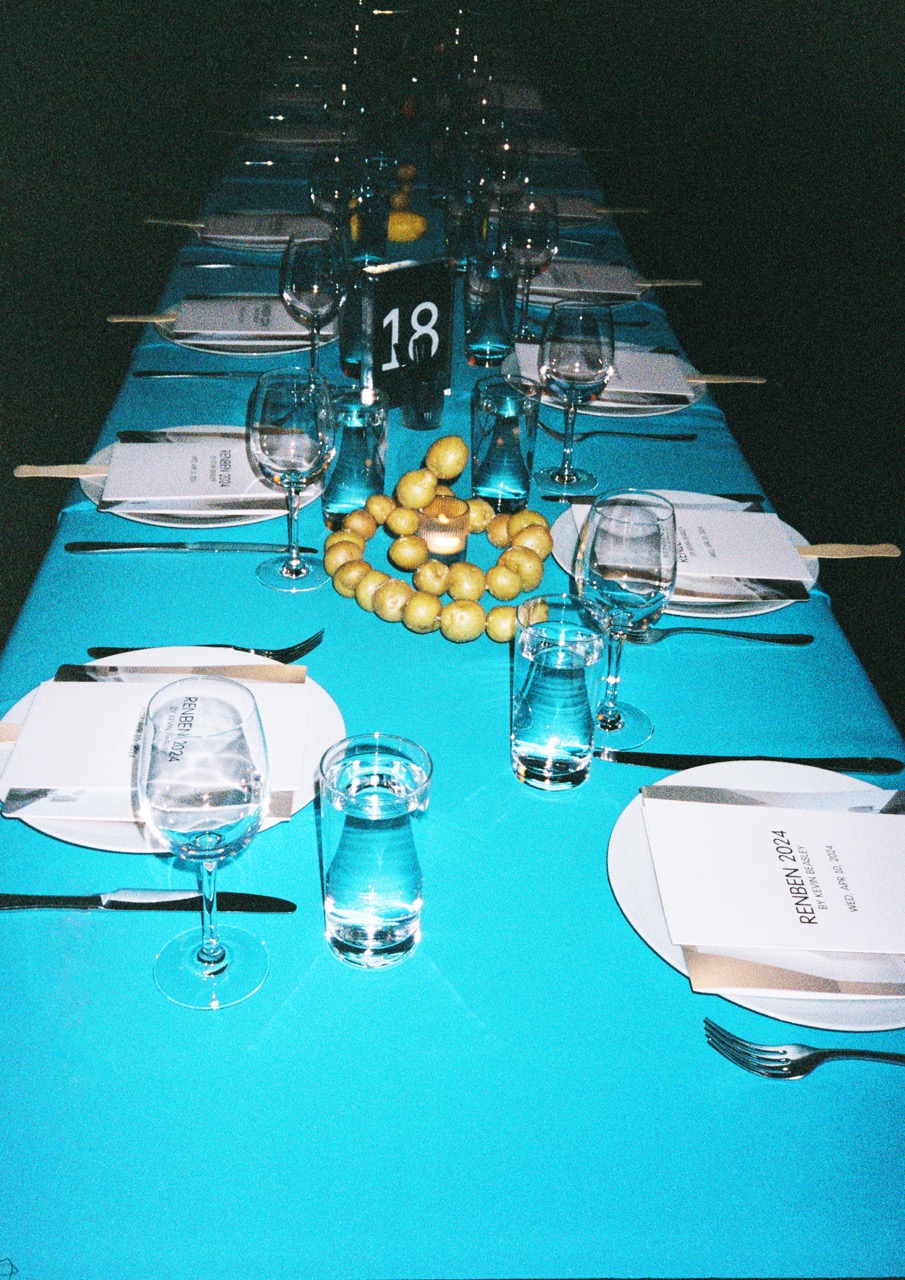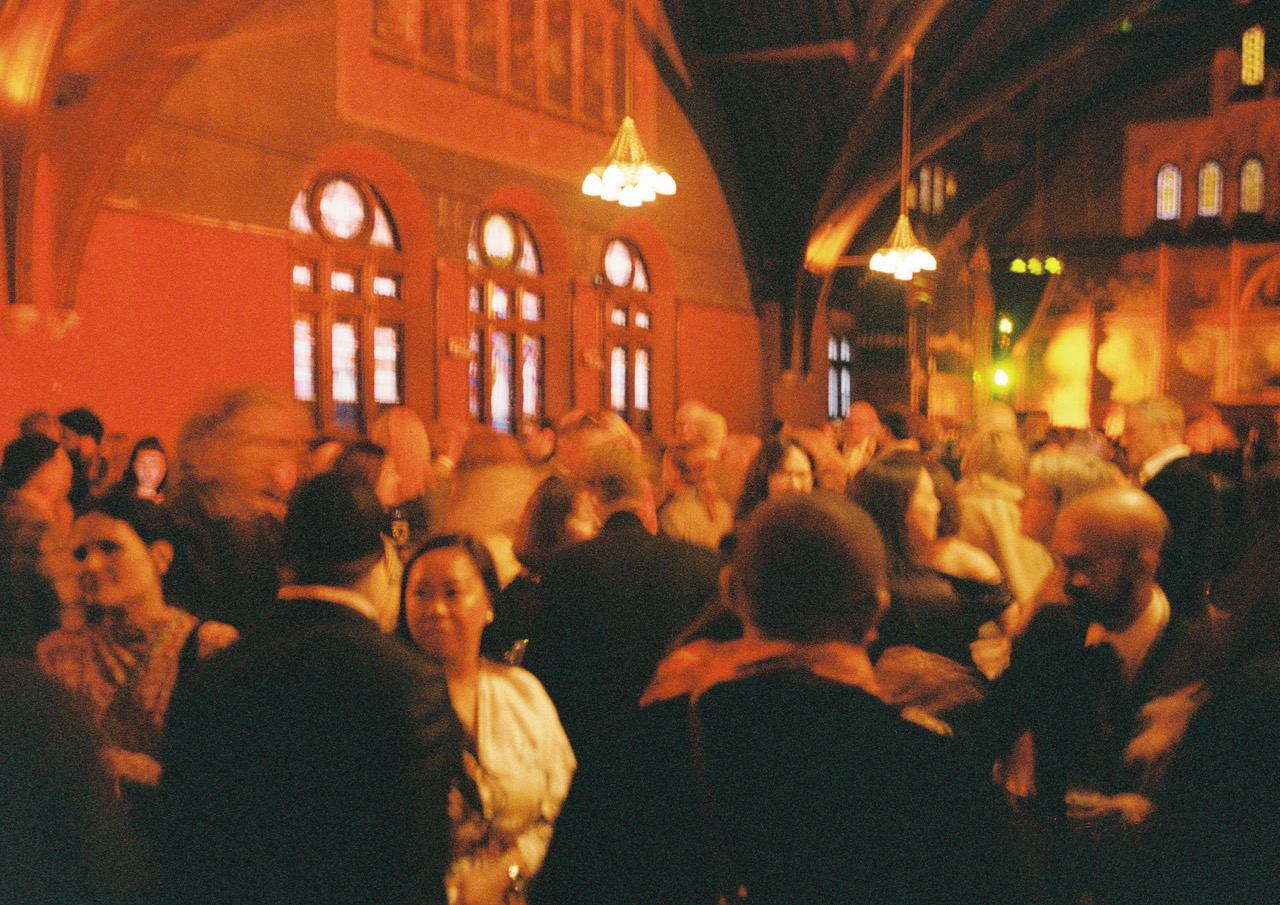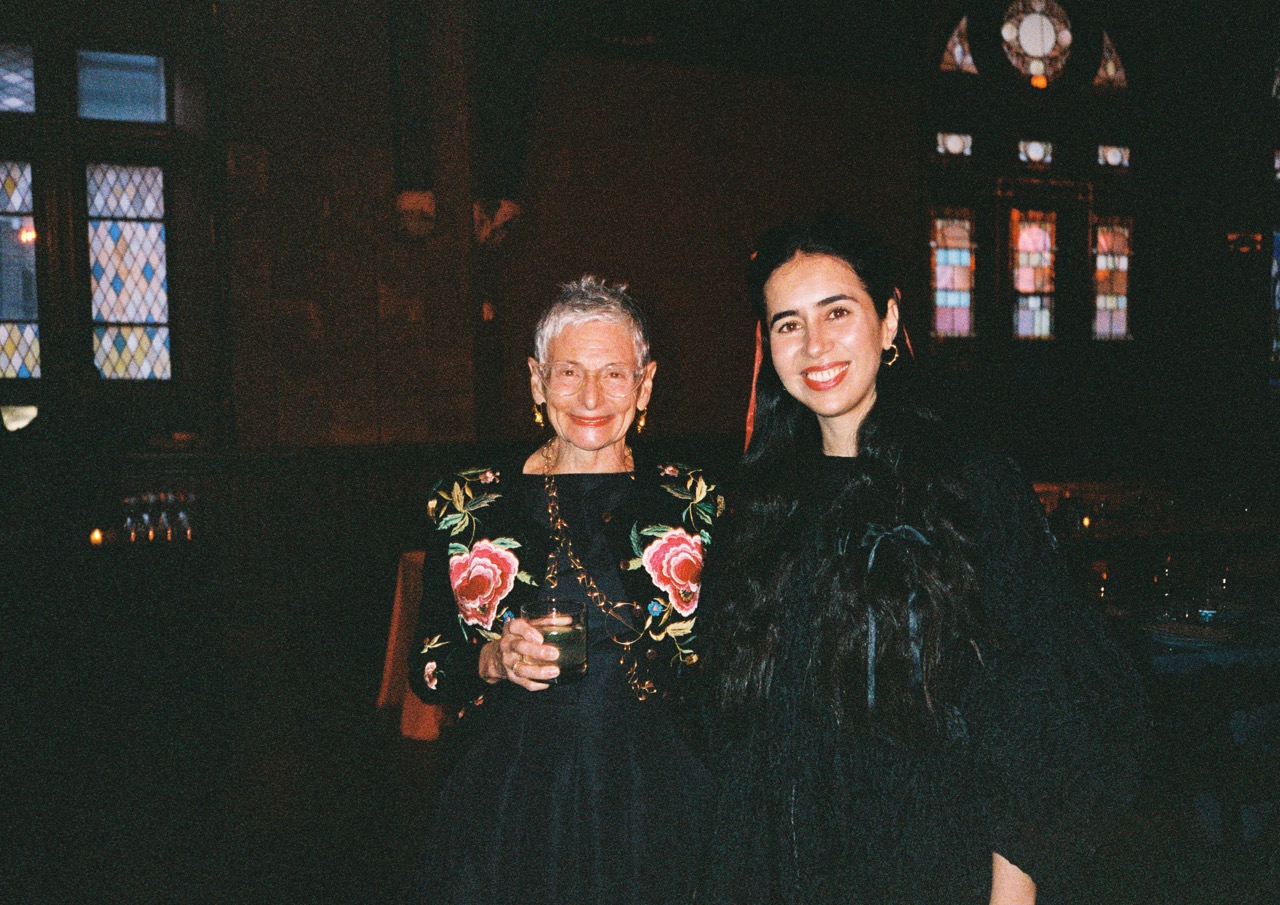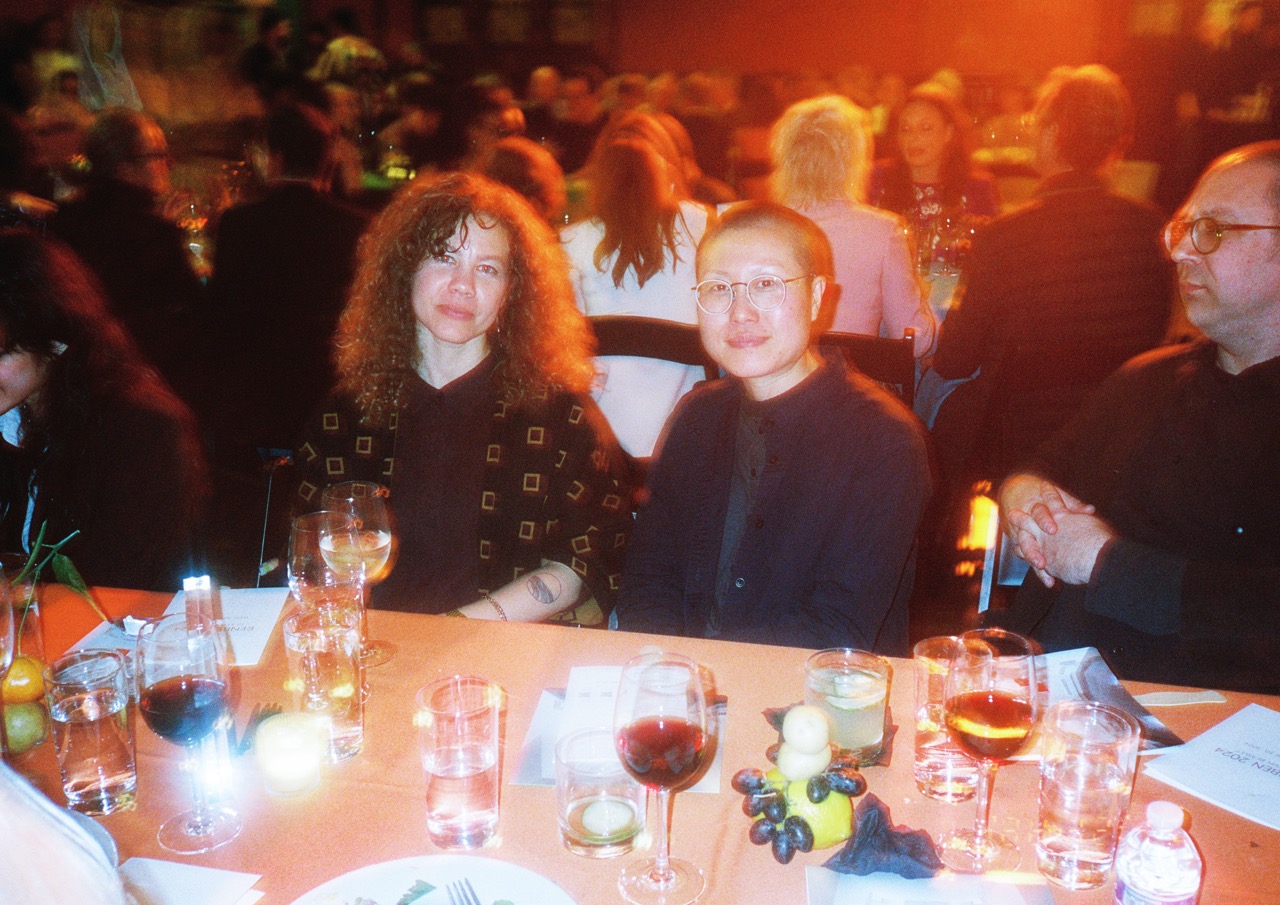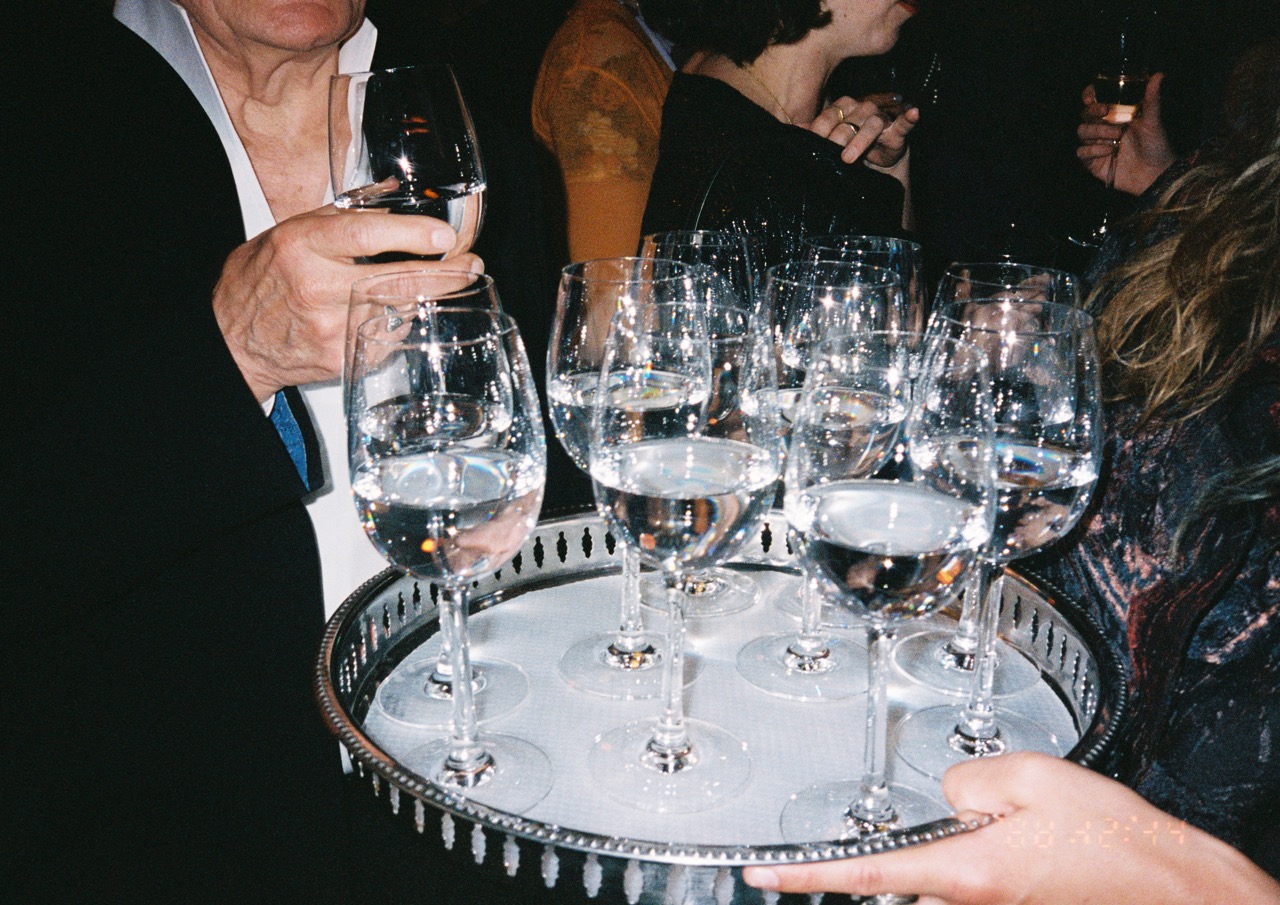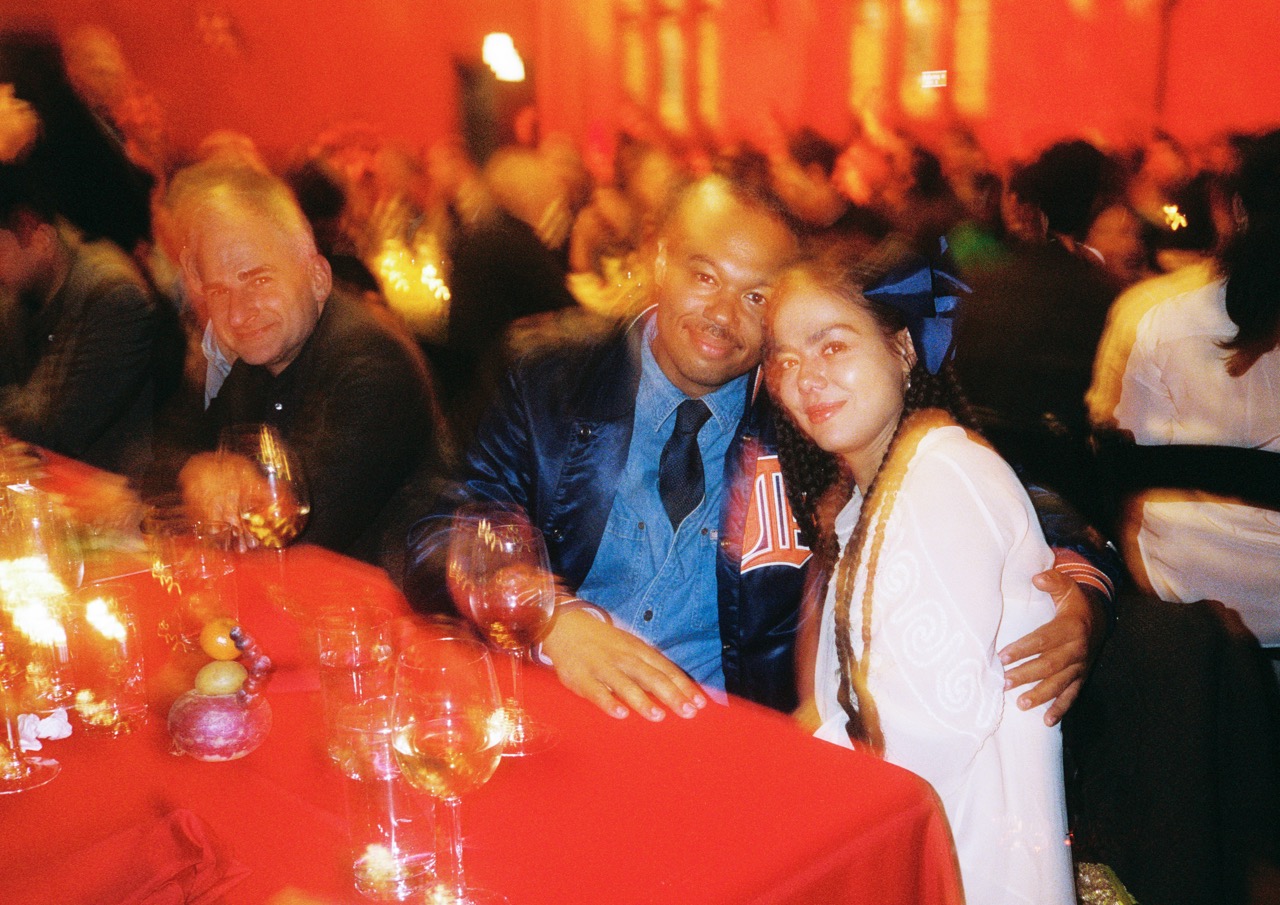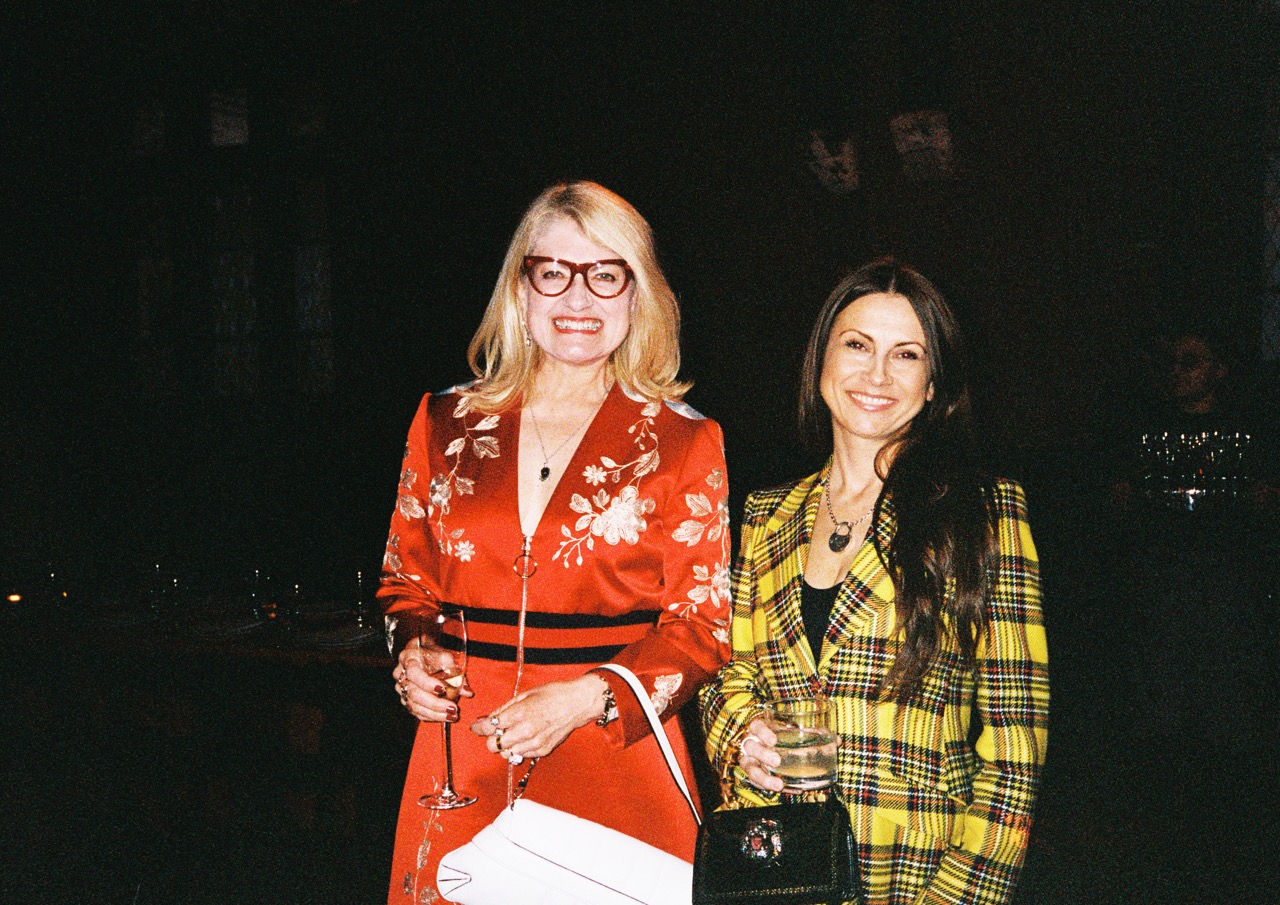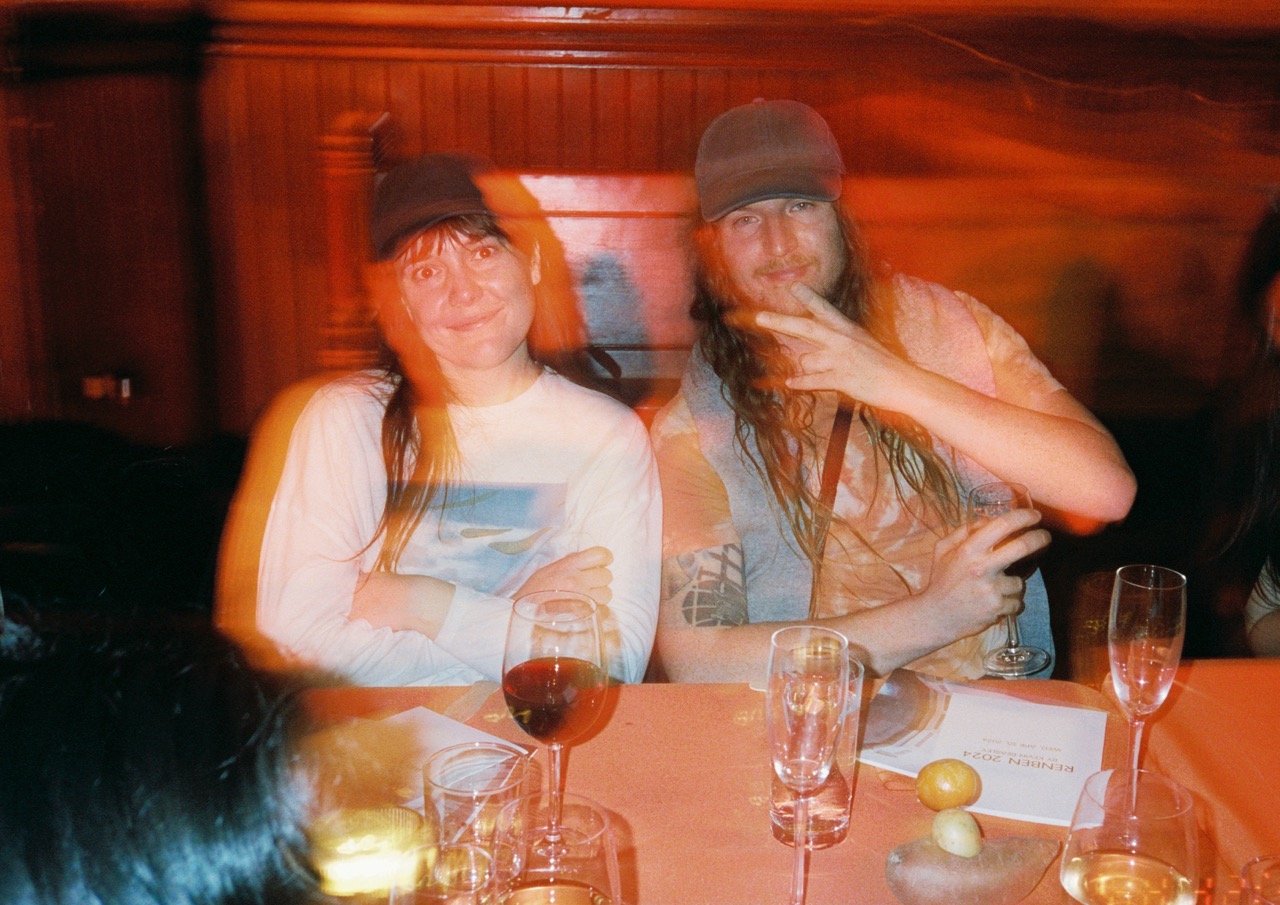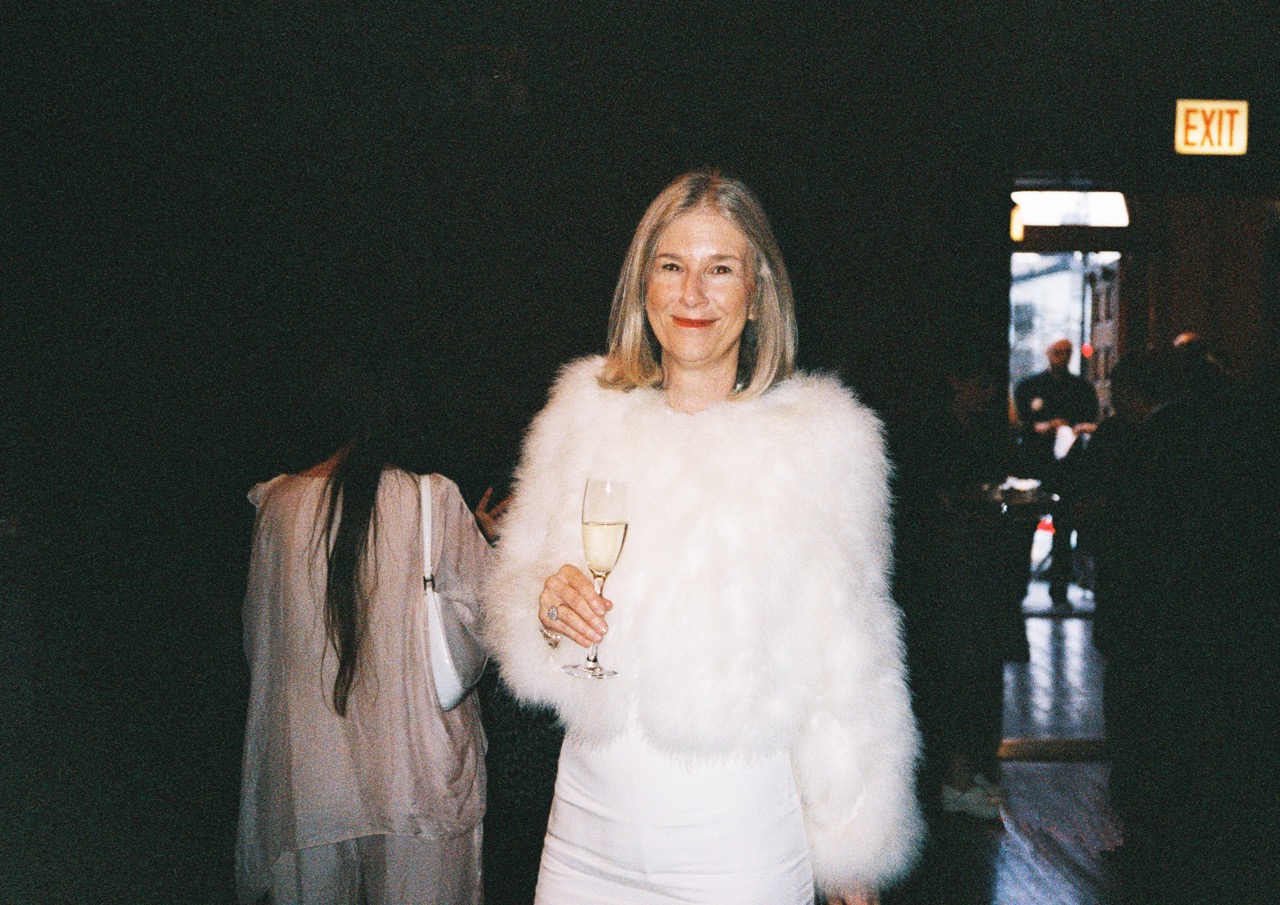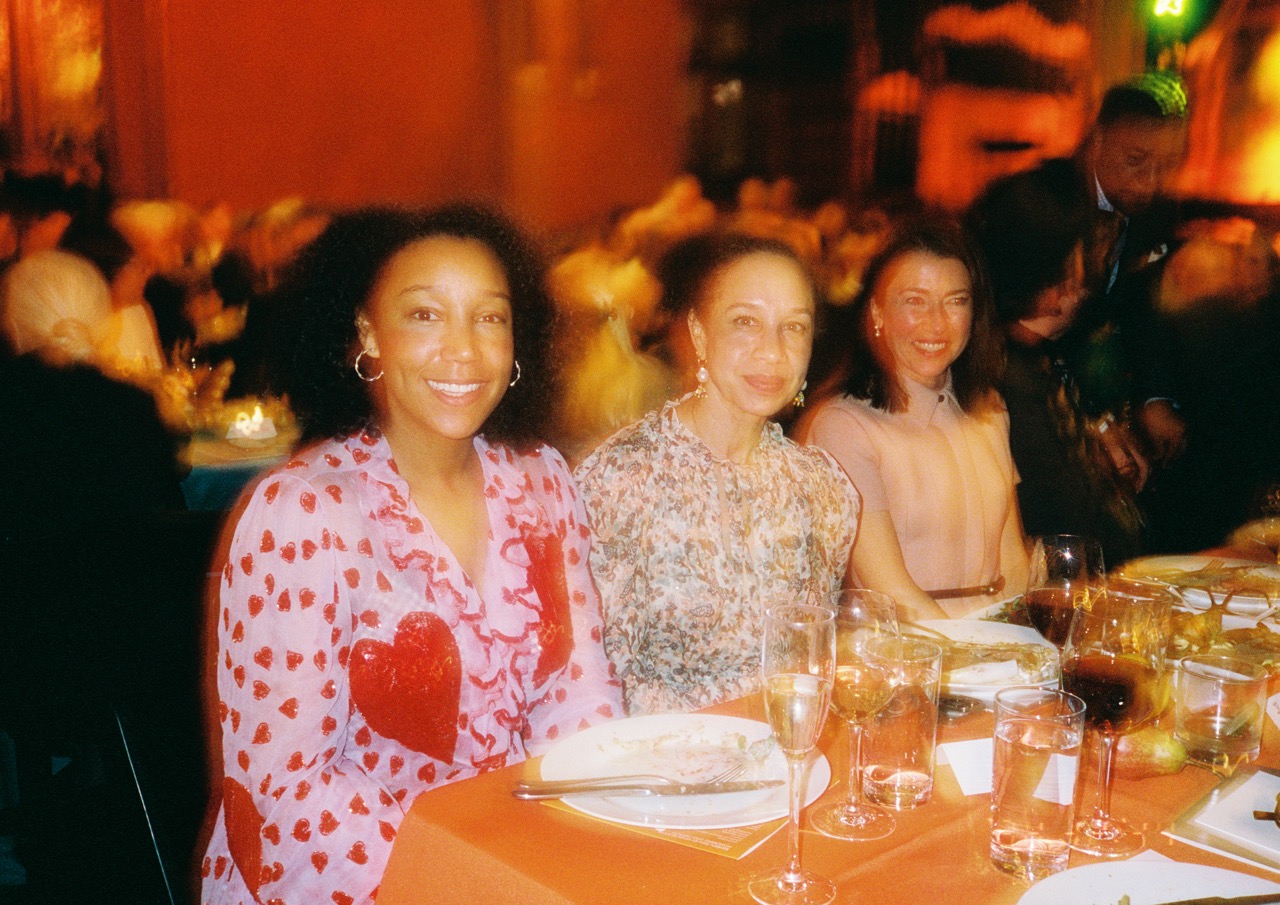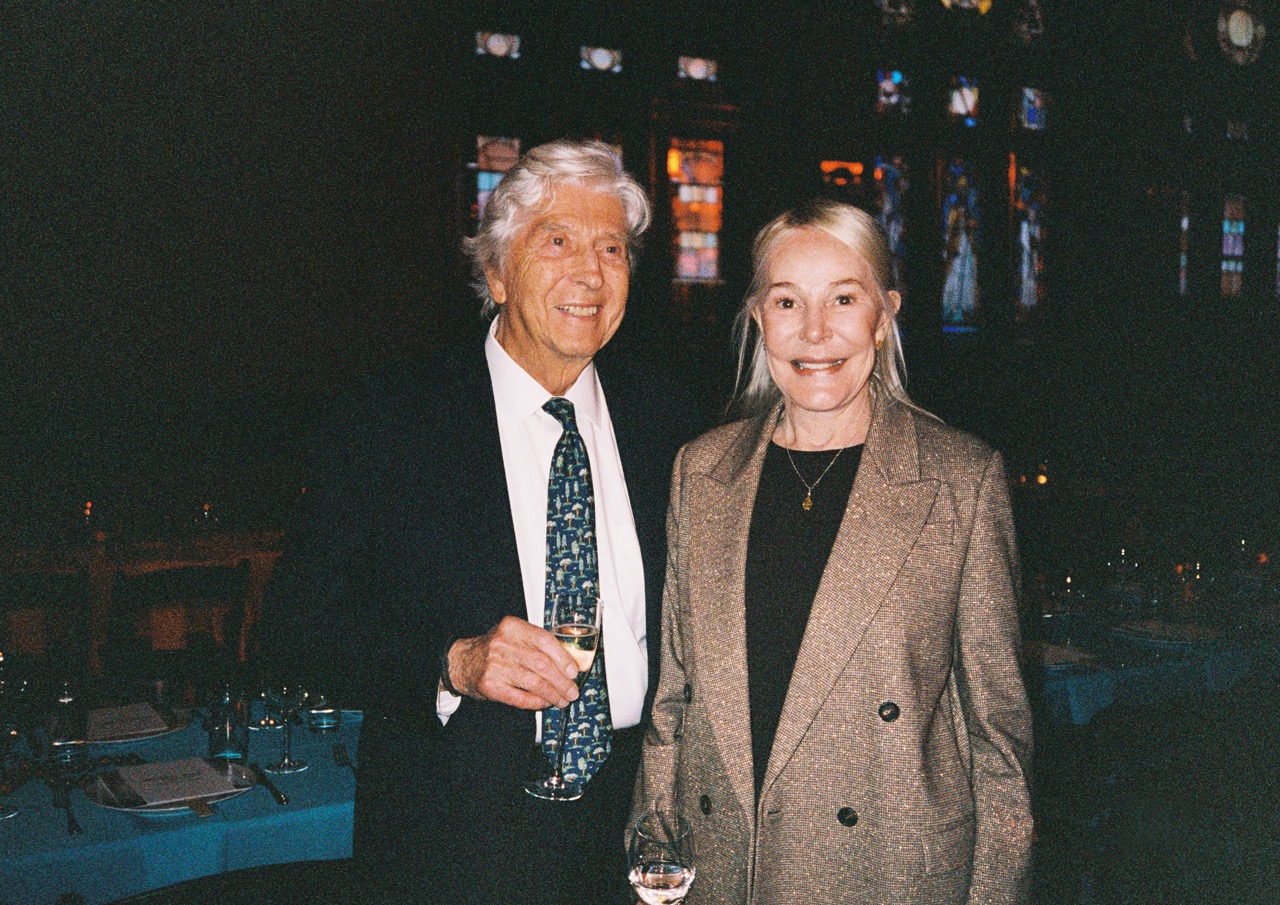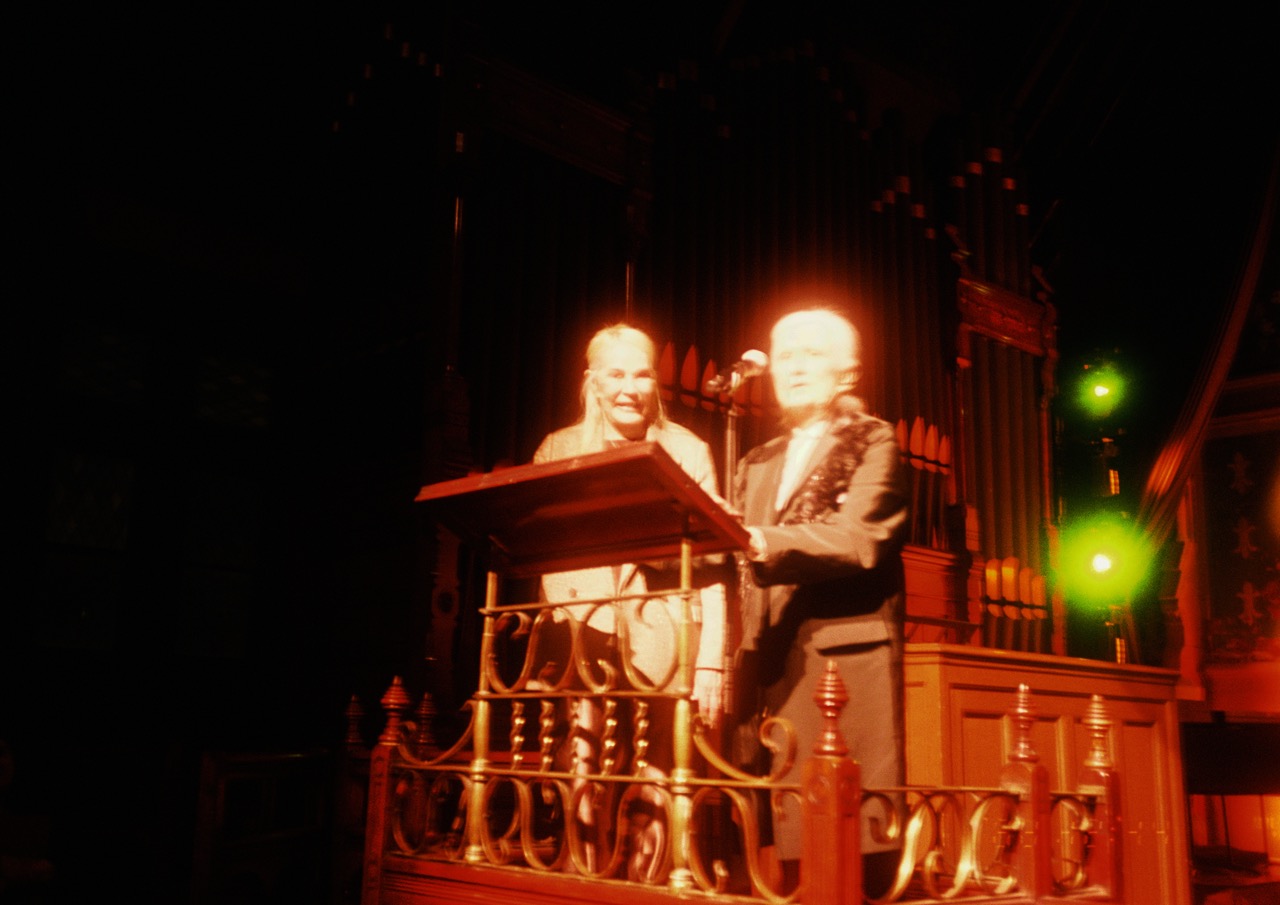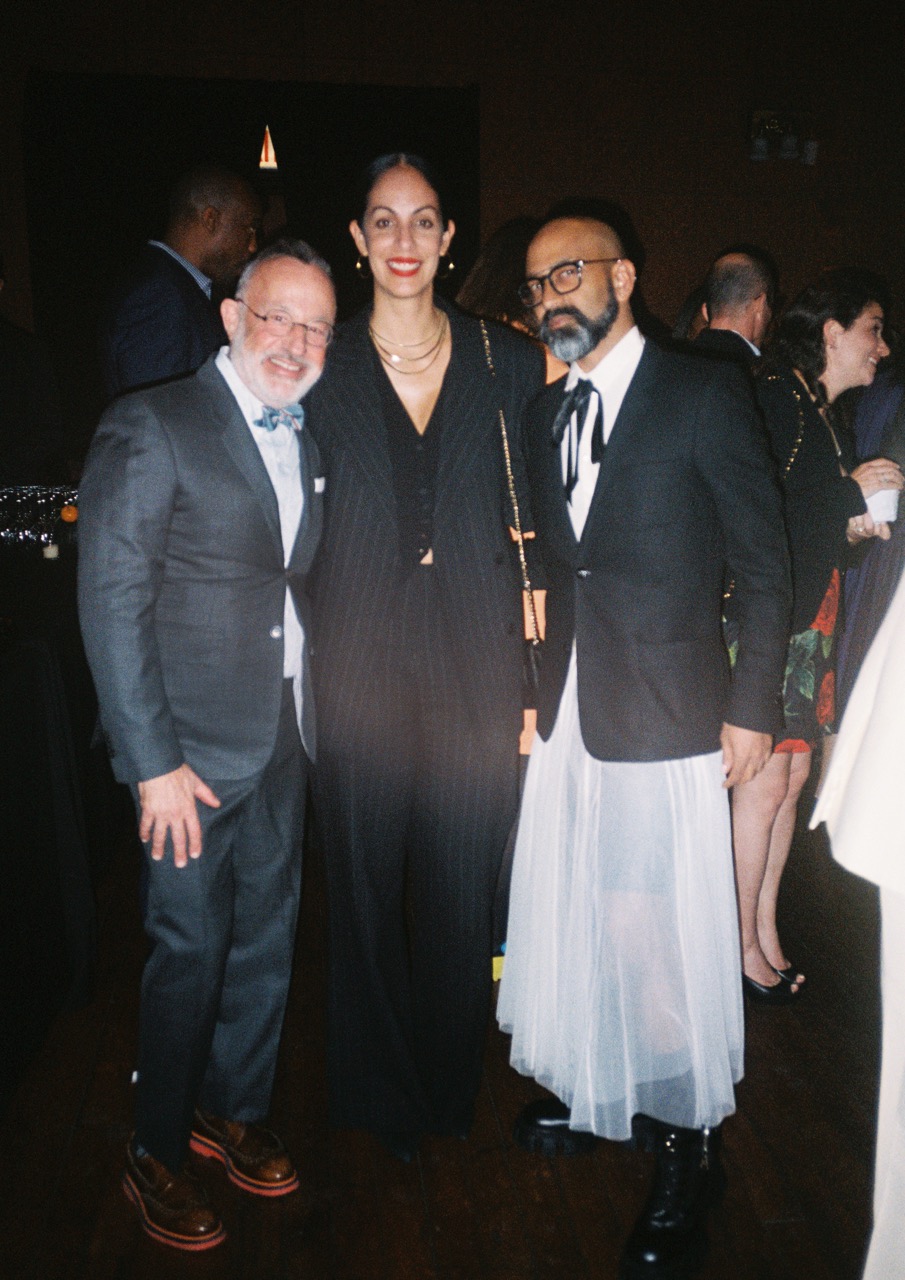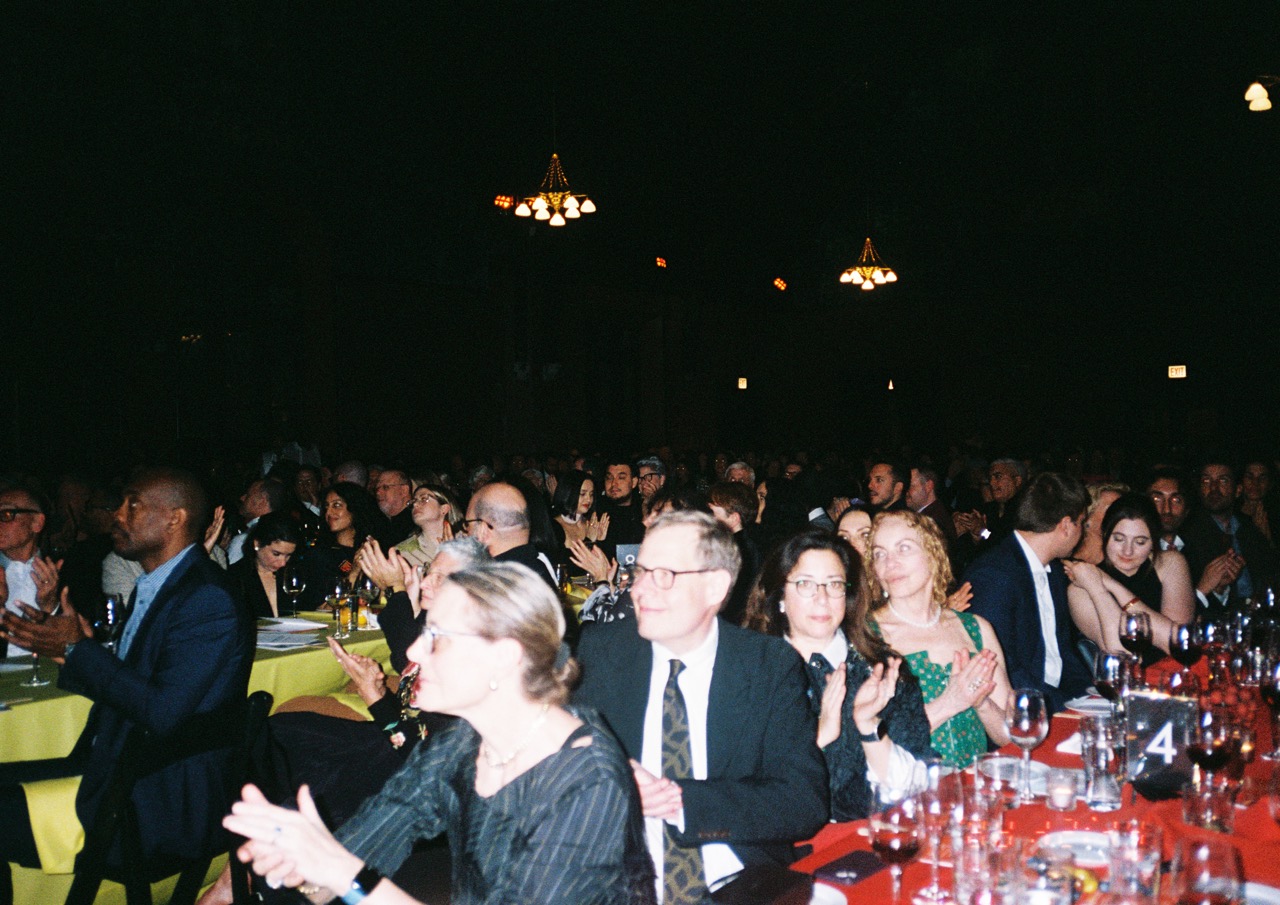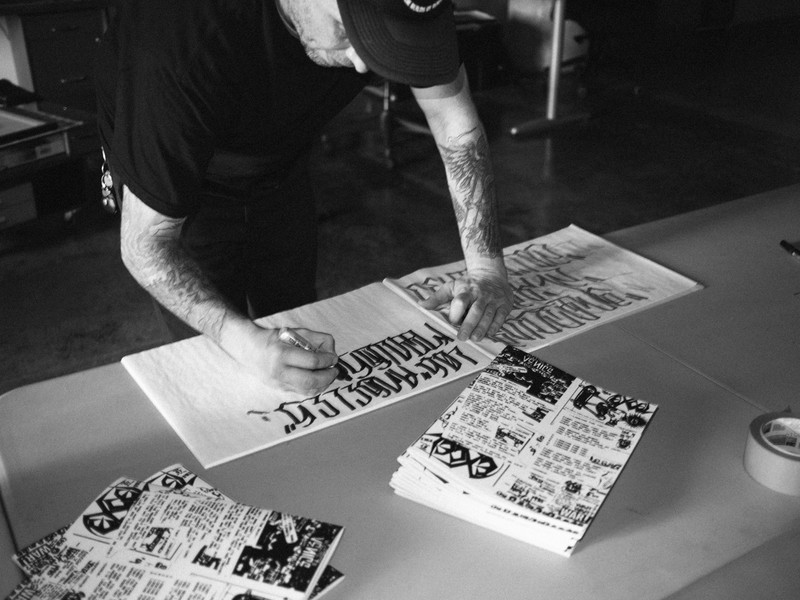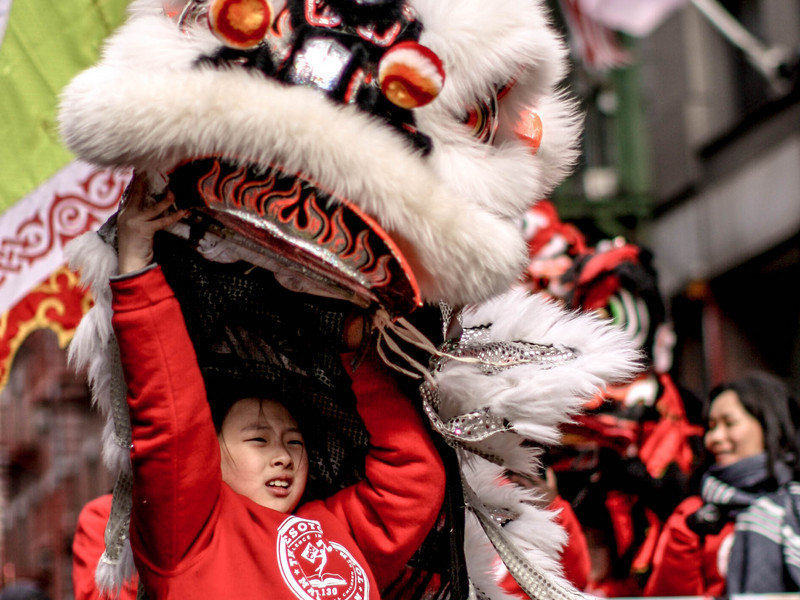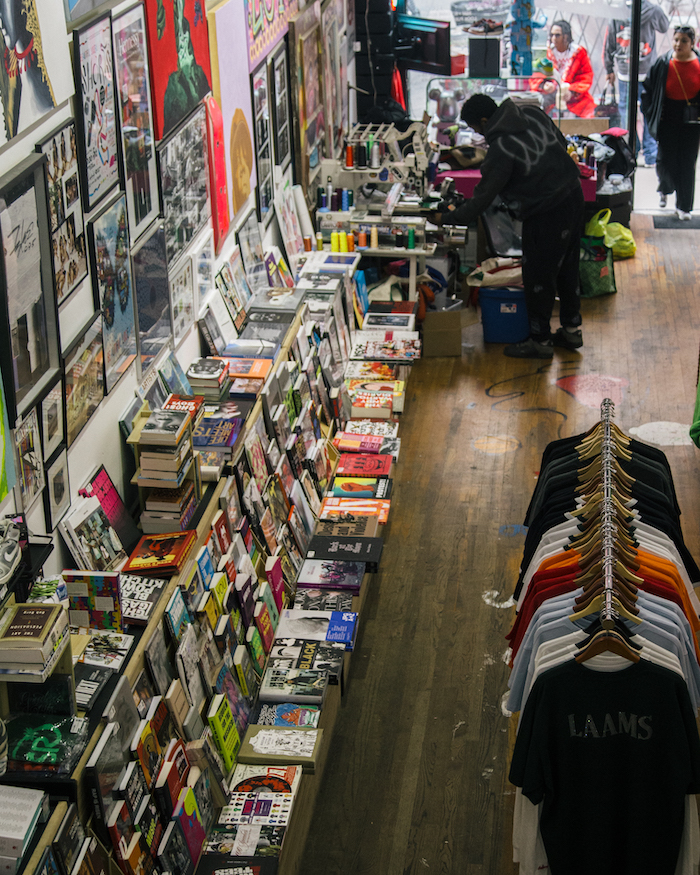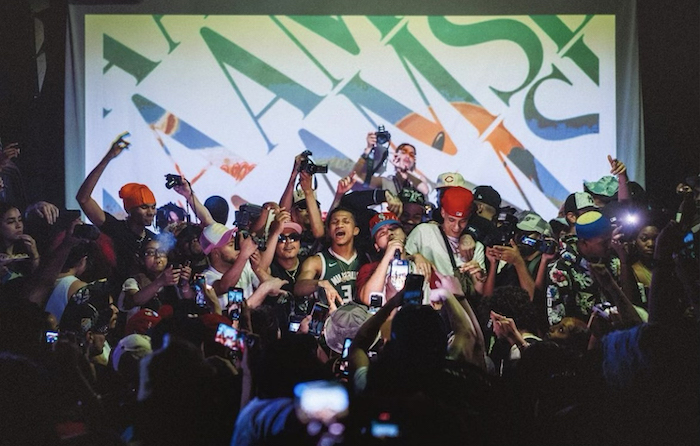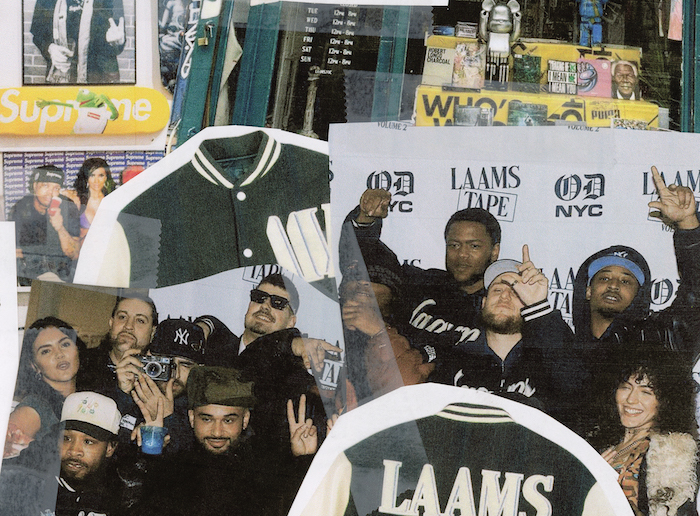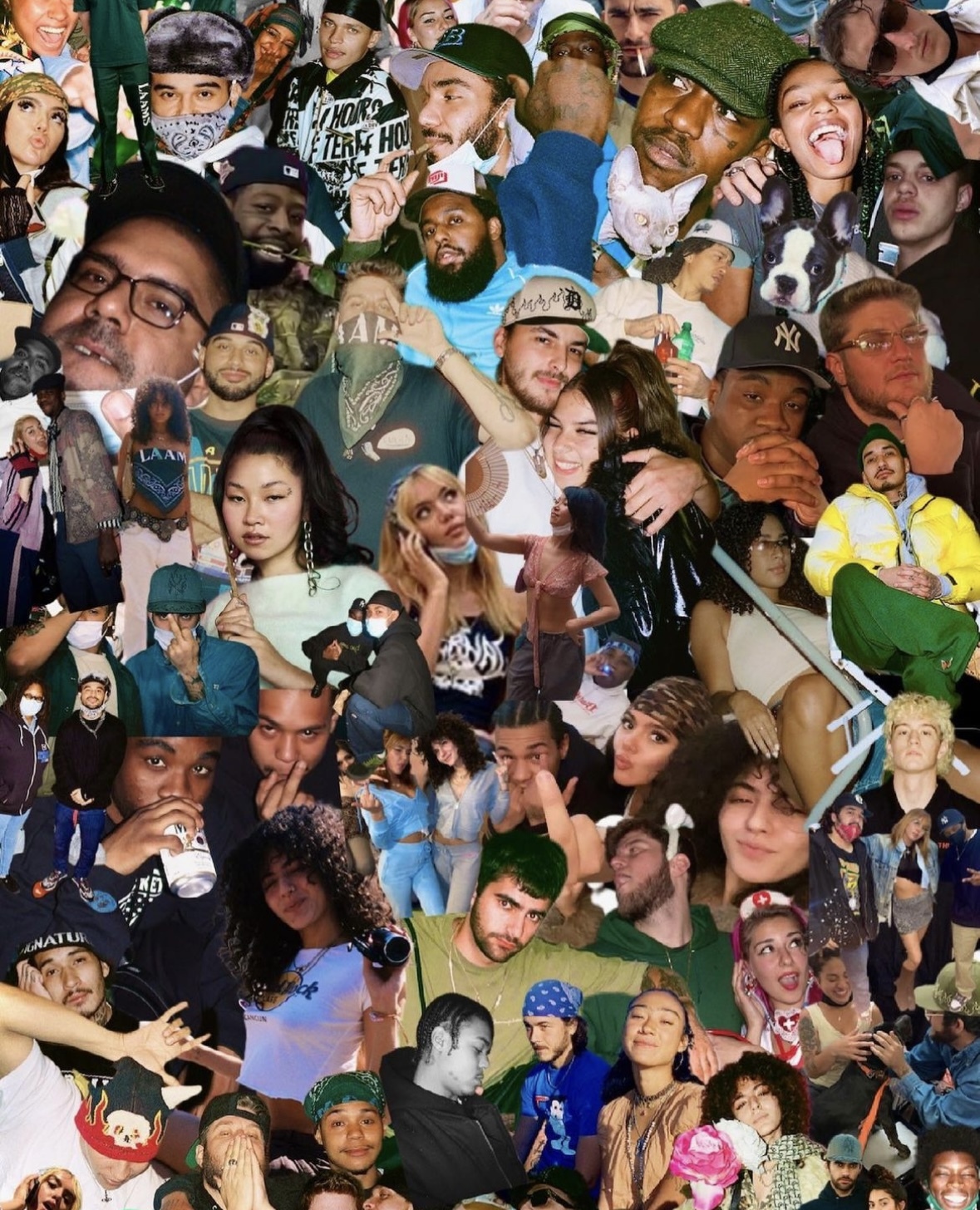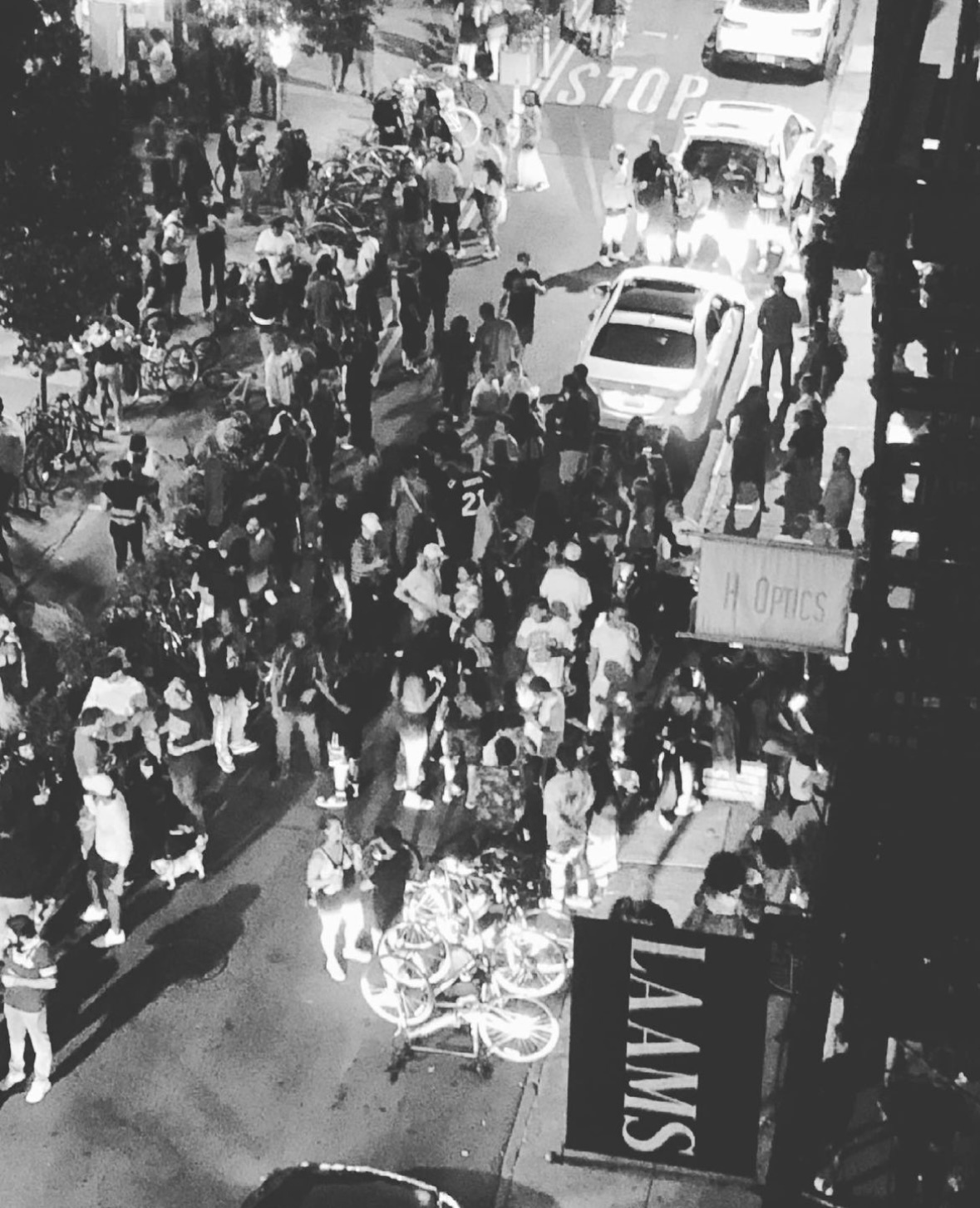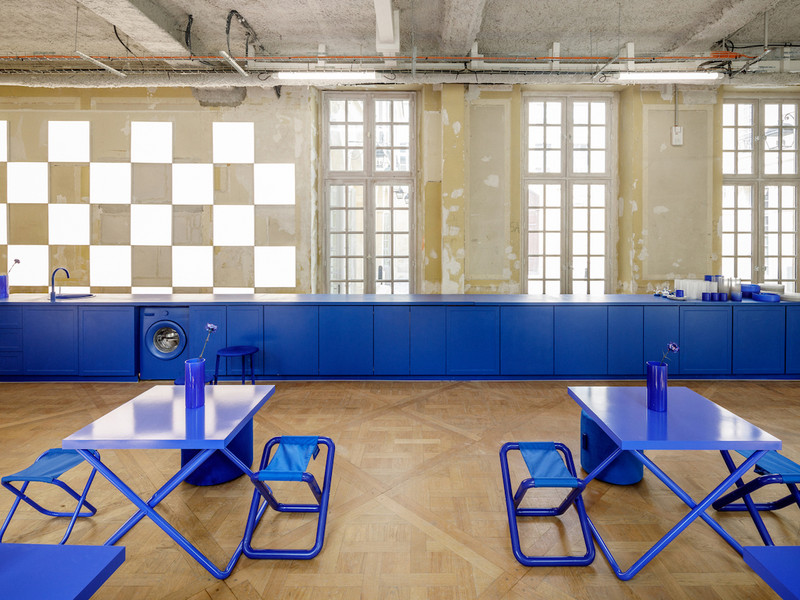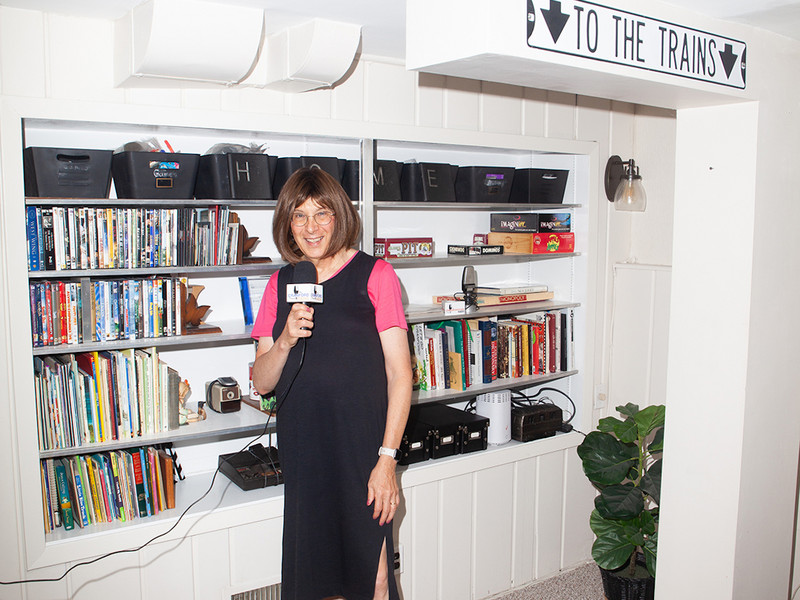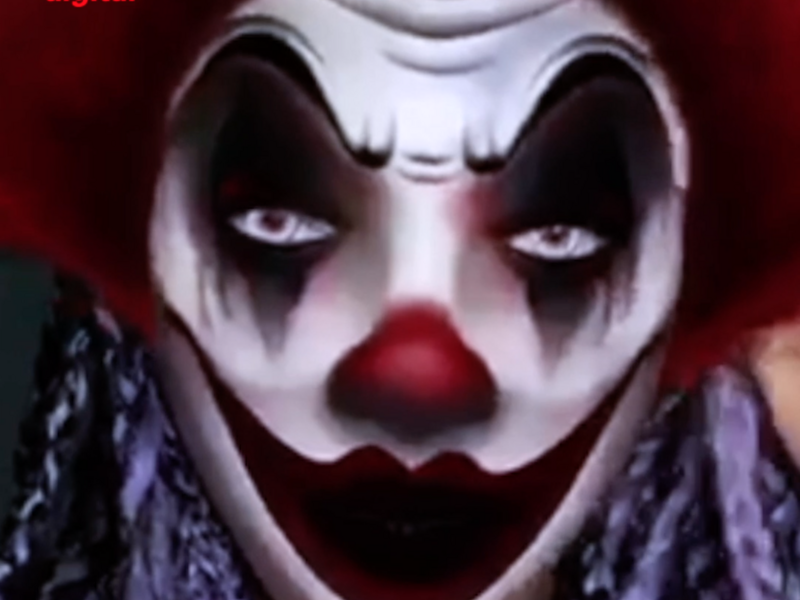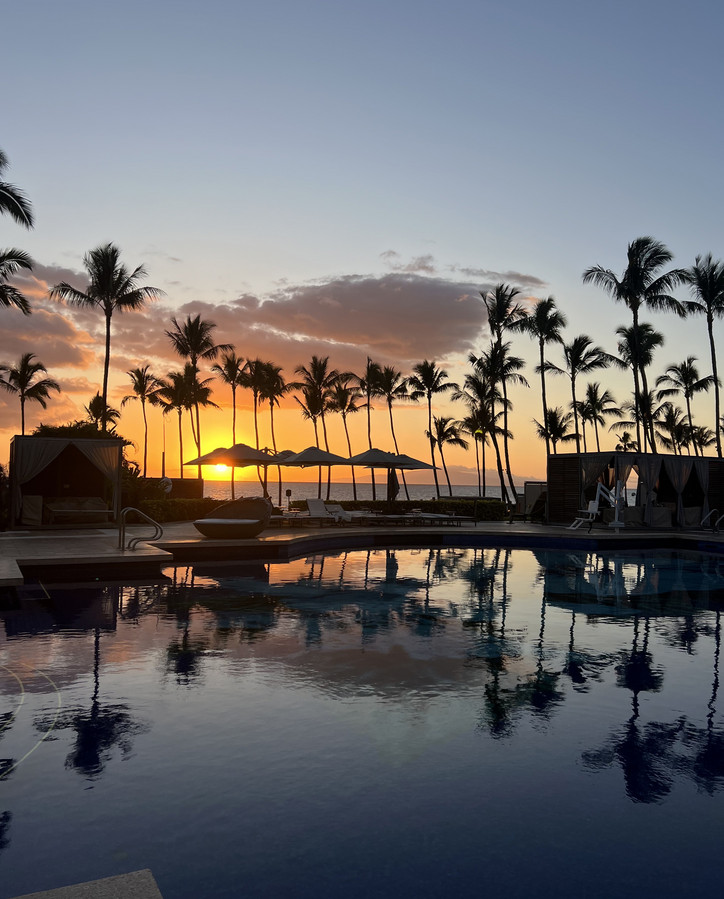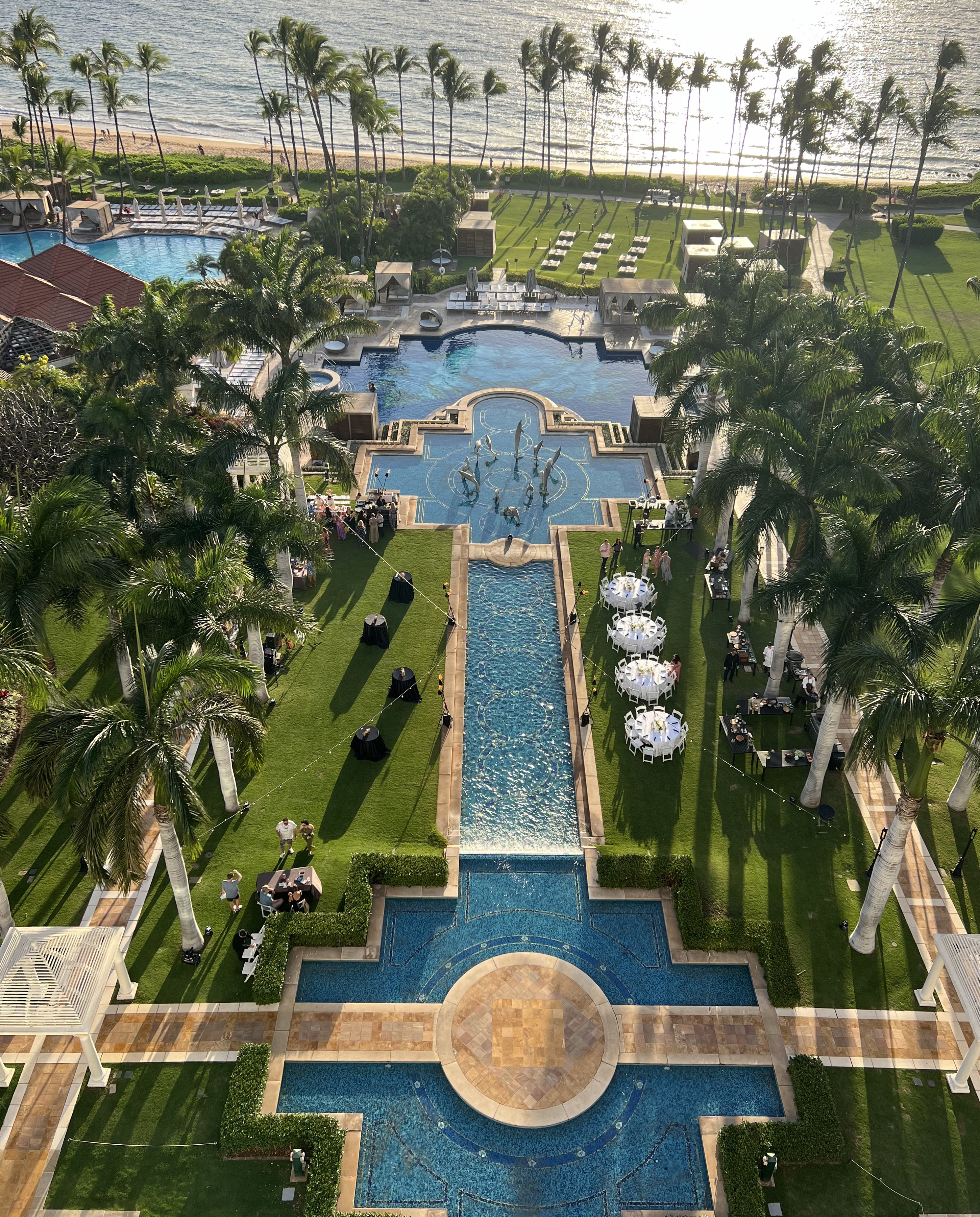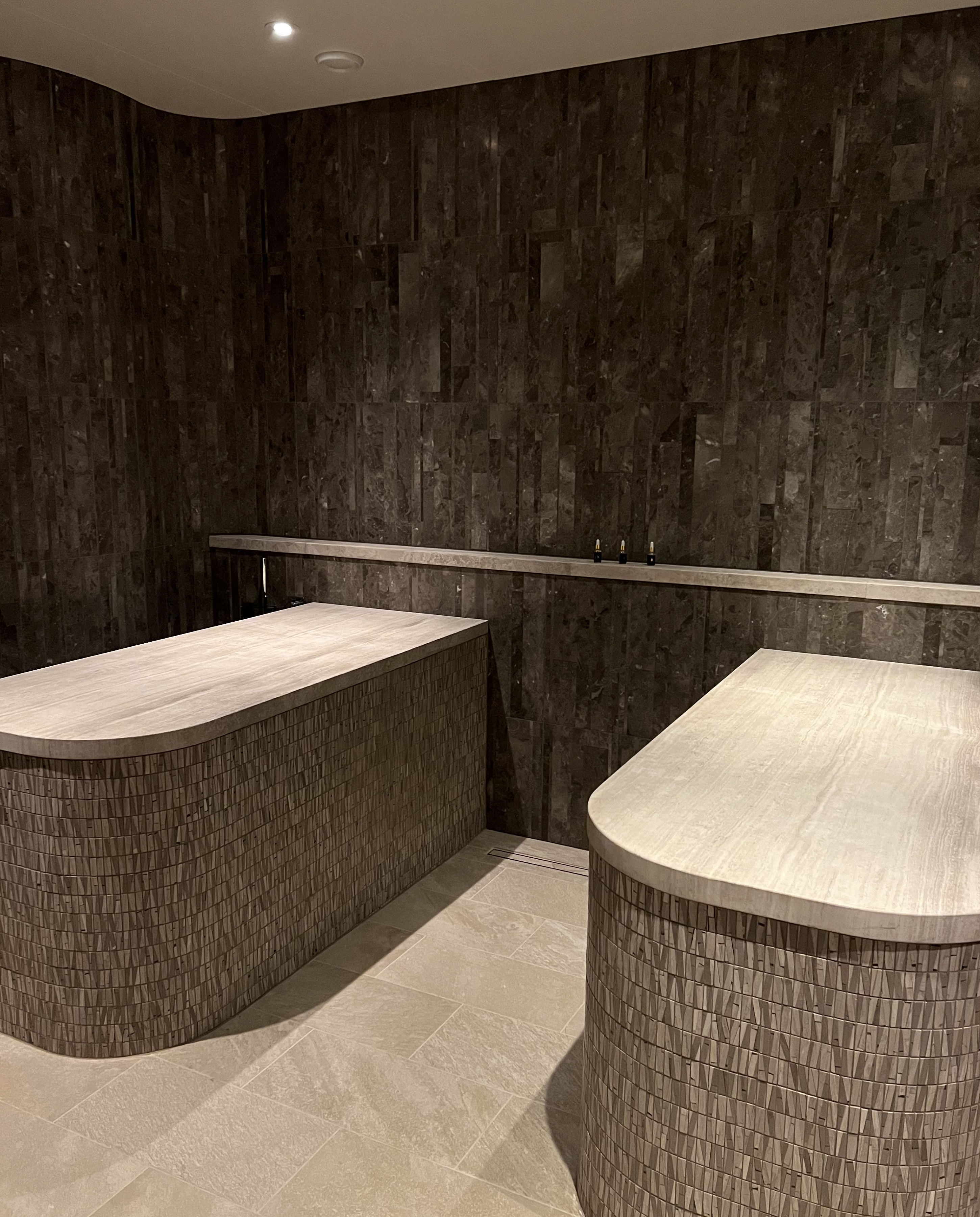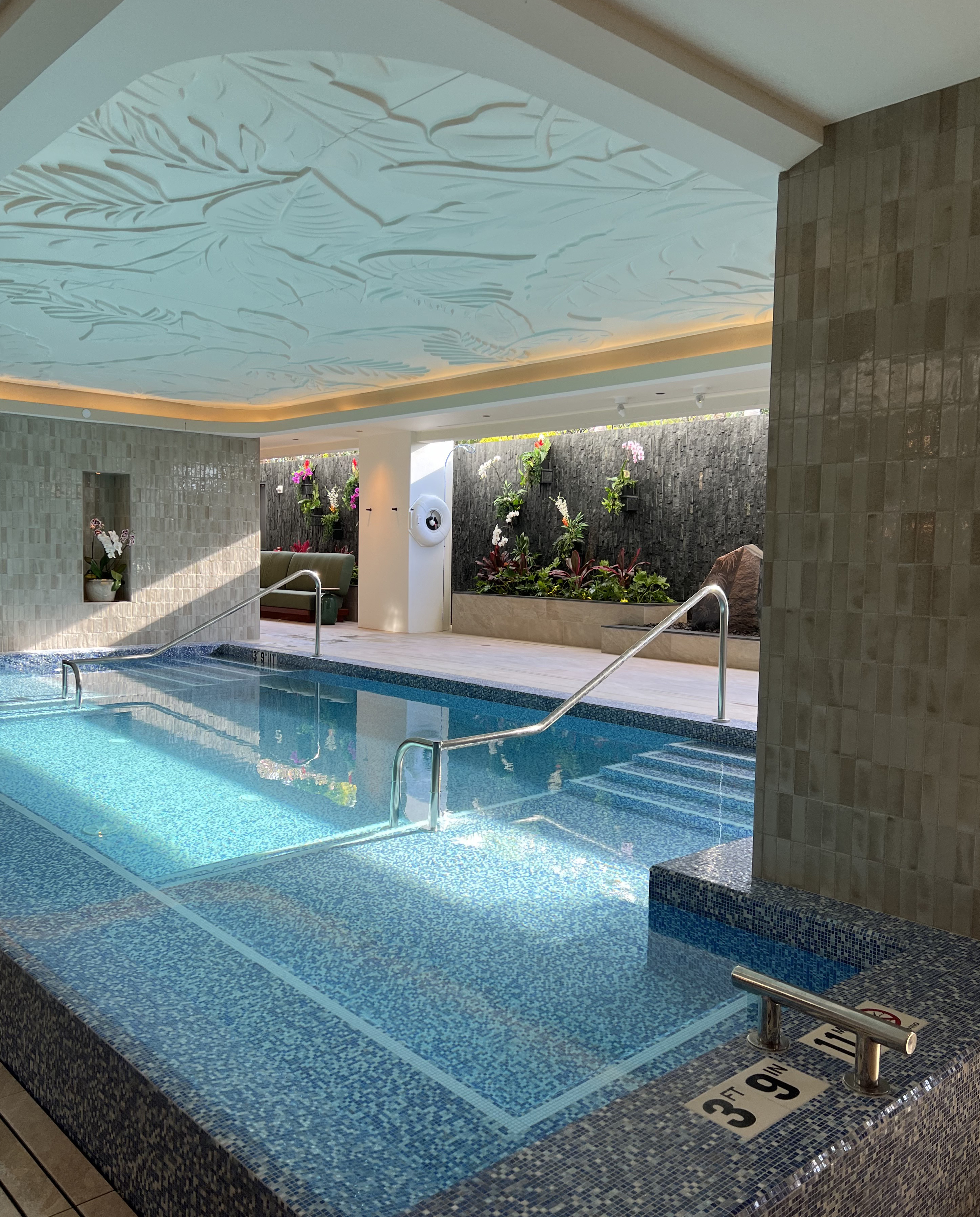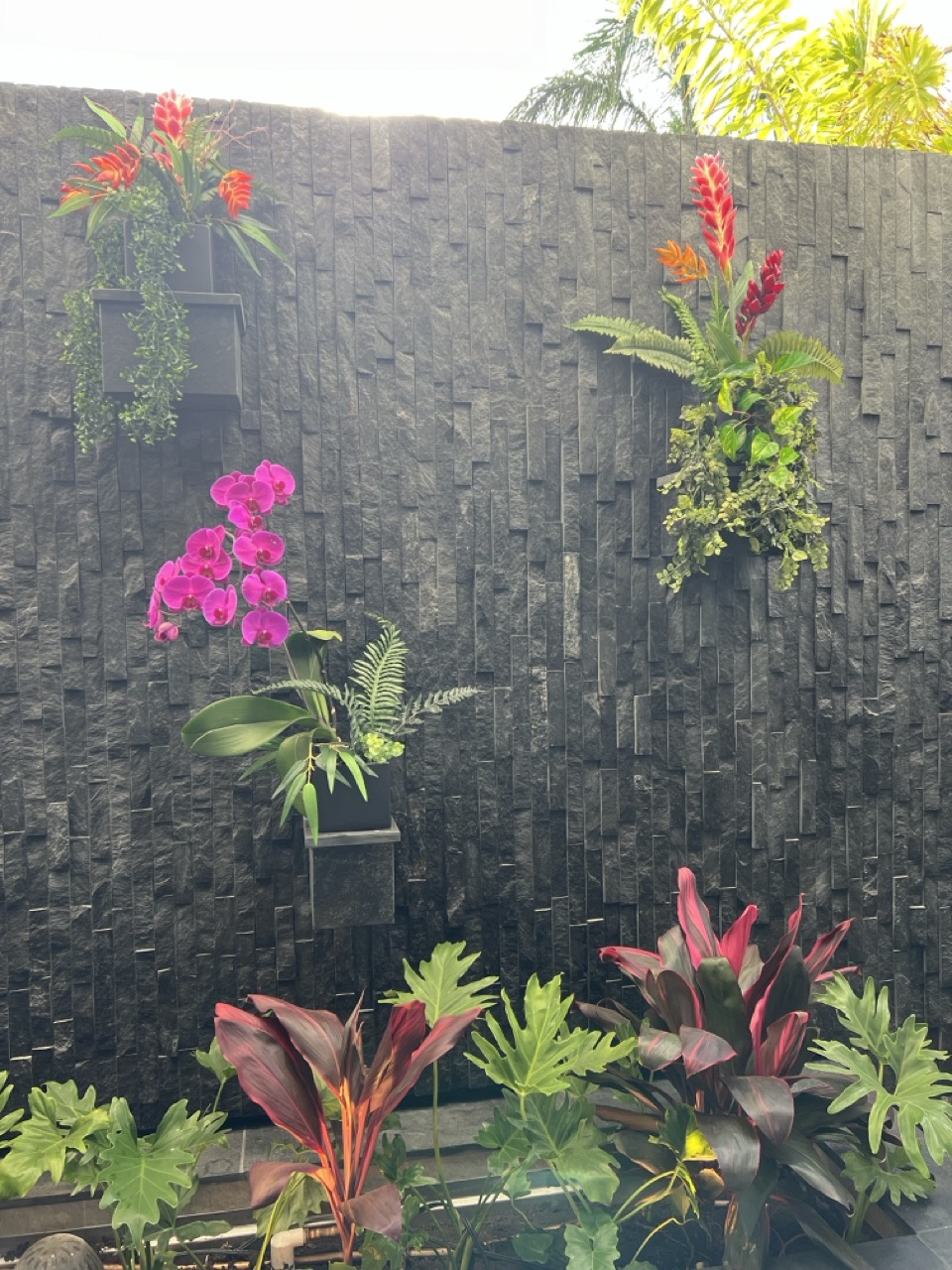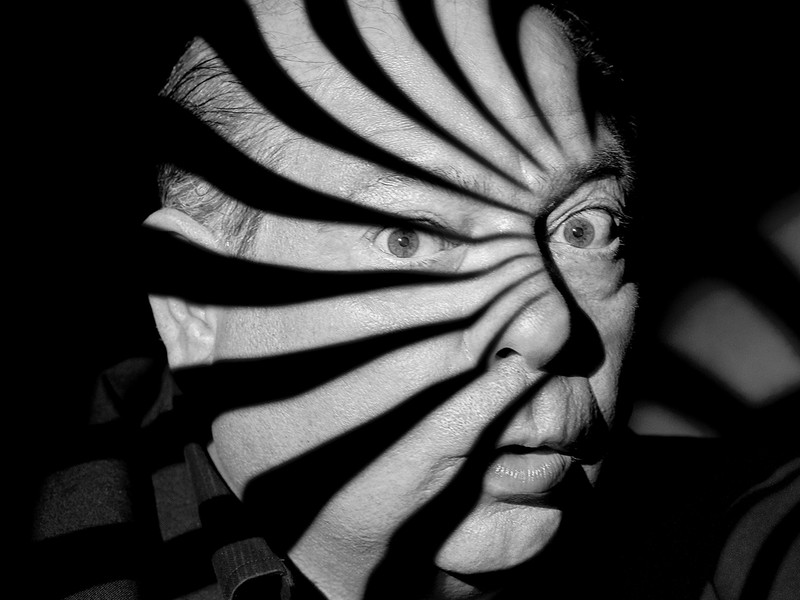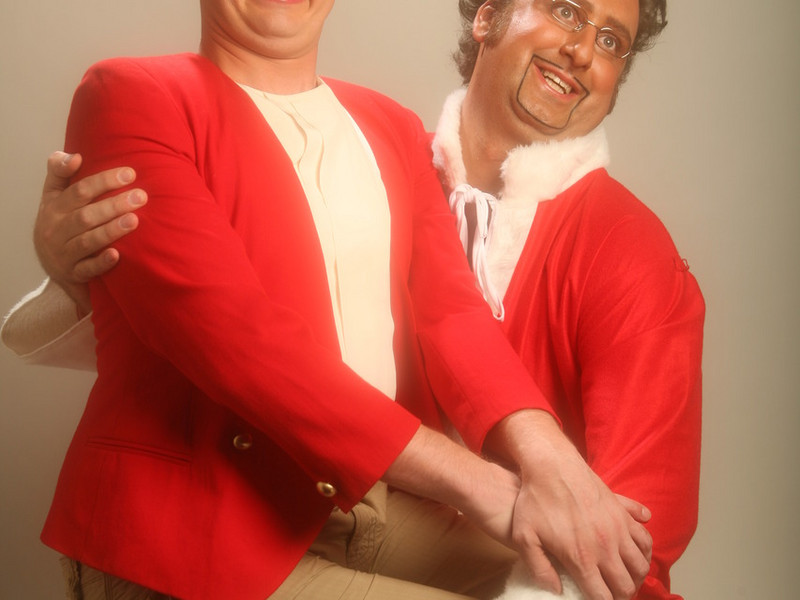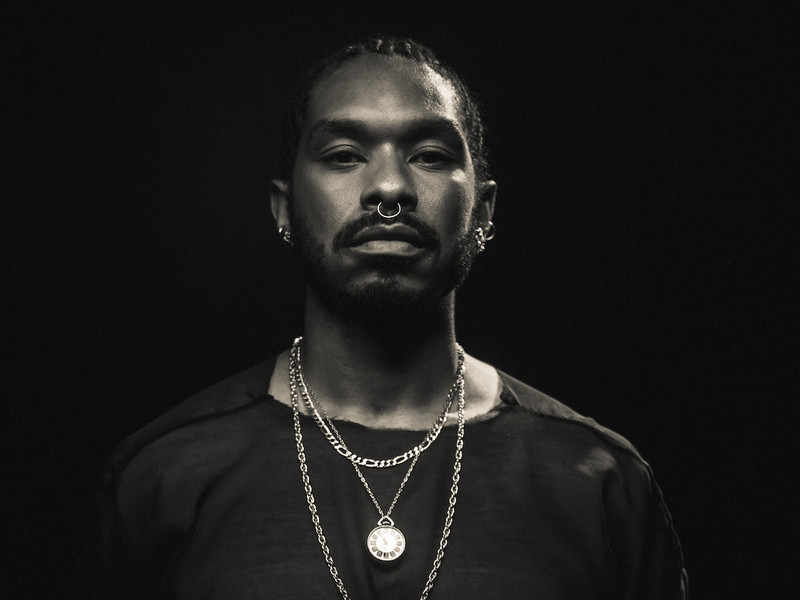On Art and Activism
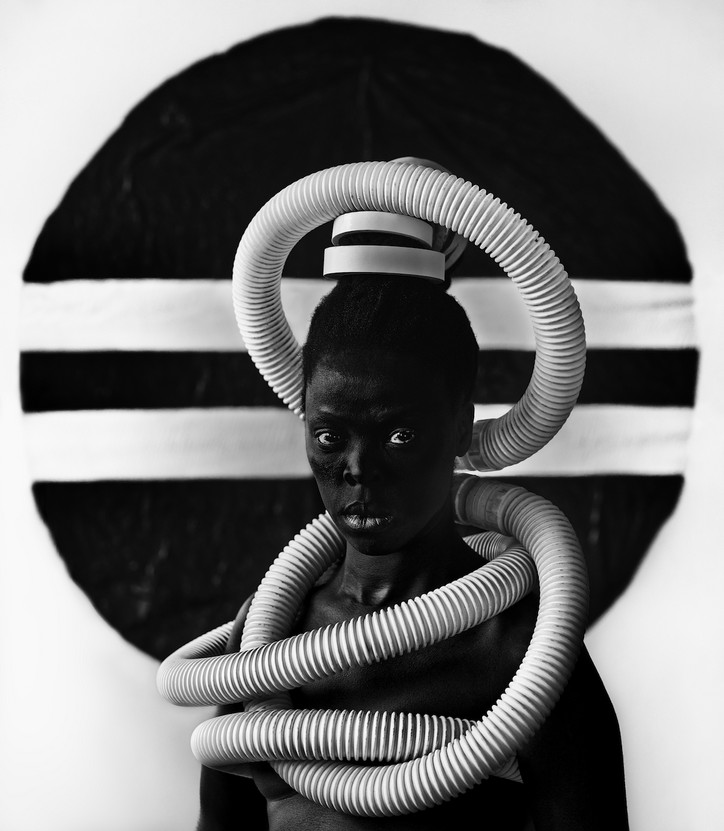
When we arrived at the Performa space to meet with Zanele, she was running an hour behind - not unusual in New York. When she did arrive, she apologized profusely, and my editor said she understood because she’s known many artists - here, Zanele stopped her.
“I’m not an artist,” she said, “I’m an activist.”
What is the gay scene like in South Africa?
It was at this point that Zanele insisted Odi Diva join us, to answer this question and accompany her in the interview. There was some confusion, as Odi was in the bathroom starting her makeup. She happily sat down with us and chatted in her lovely South African accent.
Odi The gay scene in South Africa is vibrant, vibrant and alive, I’m sure people in the states are not aware of that but it’s actually very much happening. How do we put it? Our legendary club was actually called Angel’s Bronx which was twenty years almost to the year when Naomi Campbell was rejected from the door. She came to do the first Fashion Fall/ for Relief Event for the Nelson Mandella’s Children’s fund and she was removed from the door because, um, well, she looked like a drag queen. She said, “My name is Naomi Campbell and I’ve brought all the top supermodels in the world including Christie Turlington, Amber Veletta… And they turned her away from the door? Odi: They were like, Micheal Jackson is here as well, honey, everybody’s gotta pay. And that was Angel’s Bronx, and that’s where I was discovered while singing karaoke as a boy, I wasn’t yet Odi Diva. It was a big Karaoke night. I think Capetown has one of those really interesting places, we don’t have so much a gay village per se - well we used to have one but it’s been gentrified - but you can be queer in a lot of spaces that are not necessarily queer-orientated.
Zanele When you ask how’s the gay scene in South Africa, it’s so broad. You’re speaking to gay men, surely for your own interest or friend’s interest, etc., when you say “gay scene” you assume feminine gay men equals to metrosexuals equals to the butch leather men etc, etc, which doesn’t connect with my realities, as a black lesbian-identified person. It’s a broad question. Also to limit or narrow your question, would be, how is it like to be, speaking as a media person, as a producer of content - gay scene in South Africa? South Africa is nine major provinces with 50 plus million population with four major races, which is black, white, white minority but white majority in terms of business-owning etc, etc, so a white gay man’s reality is different to a black gay man who doesn’t have a job, in terms of economy or class or the status of the two people. Then there is a black lesbian, who is different to a white lesbian or an Indian lesbian or a colored lesbian. You have four races, no two ways about it, black, white, colored and Indians…. And also to say, “drag scene” - there’s something called ‘homopatriarchy’ - this is it. To say this speaks to male dominance within the queer scene or queer village.
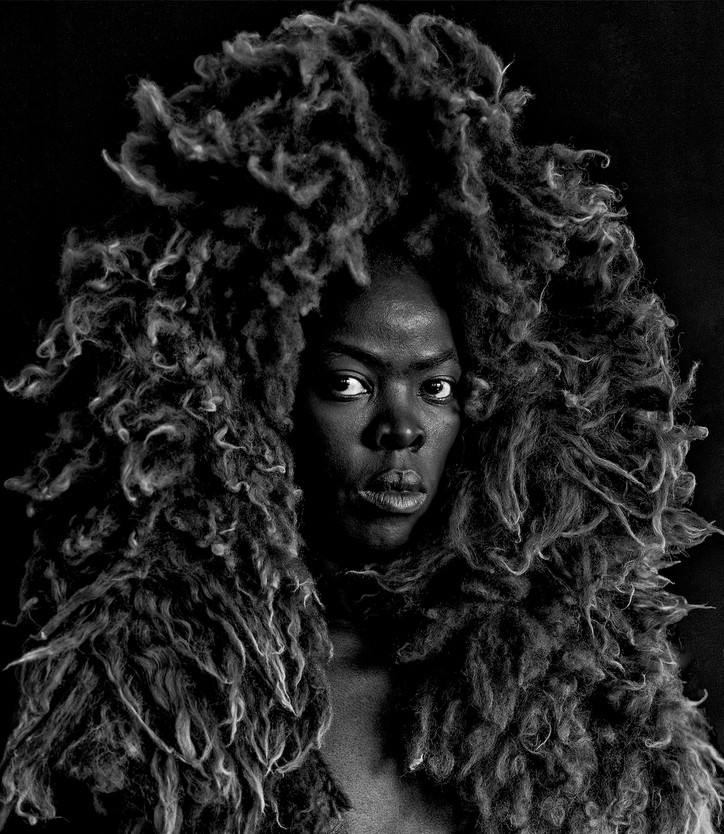

So would you say there’s a separate lesbian scene?
Zanele Of course we are different.
Odi Well when you talk about gay, like a gay clubbing scene, when I thought about it in my head, I didn’t think anything lesbian right now. When people think of a gay capital of Africa, they’re thinking of going into a place where you’re going to see a whole lot of gay men. I guess I think of it as linked, but now that you talk about it it is usually separate.
Zanele It will never be linked even in what is to be seen as progressive New York. We’ve just come from Stonewall, the event happened yesterday, how often do you see lesbians there? There are no black lesbians. So we have learnt to maneuver different spaces and pocketed ourselves just for survival. But when you say New York Pride, who’s at the forefront there? It’s not lesbians, it’s not even black lesbians. It’s mainly white gay men, which isn’t a crime - it’s okay, it’s okay because they are forward. Then you have people like Odi Diva and all those cultural activists who are perceived by the curators of all these scenes as just a drag queen. So in our instance, she becomes not a drag queen but a drag queen with a degree, a well-informed somebody - that scholarship won’t write about because they want to link it to dirty laundry from Africa as if Africa has no creative thinkers. That’s the saddest part of it.
So do you feel like you entered the art world because you didn’t have a sort of space to occupy in the quote unquote “gay scene”?
Zanele Well, no it’s not even about that. For me, I come on board as a visual historian. I’m not collecting the content I’m producing the content, and my attitude being, if you don’t see yourself on tv, create the content. I’m not bothered by what Odi Diva is not doing for me, I’m bothered by what I want to see.
So you’re creating your own platform.
Zanele No, ours. It doesn’t end here (gesturing to herself). It’s then consumed by the scholars who are homophobic pretending to be okay but because they want to get their degrees they use this content anyway, which is on visual activism. So I didn’t see many books on black LGBTIA people and then I had to set the precedent, I produced the content, I’m not a collector of visuals, I produce them. And working alongside experts who are members of my community like Odi Diva, like Tara (another member of the entourage nearby) - beautiful human beings who are asserting different scenes that are never given enough spaces to shine, we don’t have many films that are produced by us [black lesbian women].
There is a lot of content produced on Odi Diva, not by me, not by Odi Diva, but by other people, which is okay because those people are challenging my brain to say “wake up” these are your people anyway, just save some money instead of buying shoes and create this content, produce your documentary, produce your photographs, make sure they are in mainstream spaces like here, so it’s not even like I’m fighting with anyone, I’m just being challenged and therefore it means I have to come on board not as a lesbian, I come on board as a business person, as a person with information, as a person who’s an expert. You know, sharing information with another expert like you, who might know of the gay scene in New York, but not be aware of the information that is not being written about for your own consumption because you deal with gatekeepers who decide what should be seen and what not. So I’m not bothered by it, I’m just on board as a visual historian as a visual activist, not as an artist, who uses photography for articulation to make sure that South African visual history is known and respected, and that the people in my village are respected.
Odi This is one of the funniest things, the story of how I ended up on this trip is sort of informed by what Zanele just said, they just opened up in Capetown the Museum of Contemporary African Art, which is our Guggenheim, which was curated from the collection of Jochen Zeitz who was the chairman of PUMA, who is the driving force behind Jamaica being sponsored by PUMA, the driving force behind, for example, the World Cup, when all the other African Nations wore African colors, so when he came to be open -
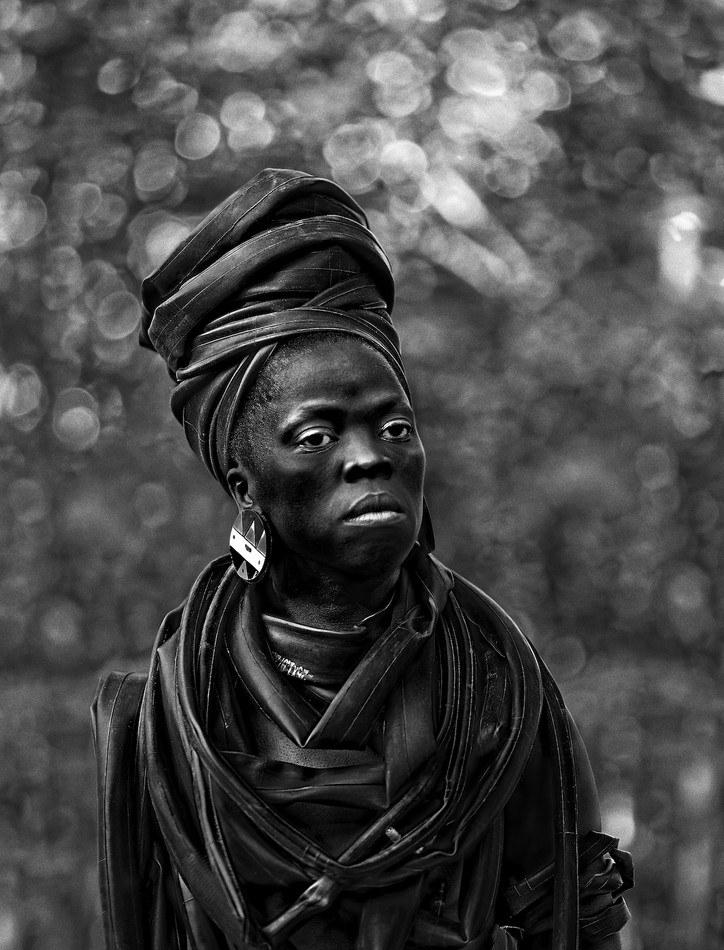
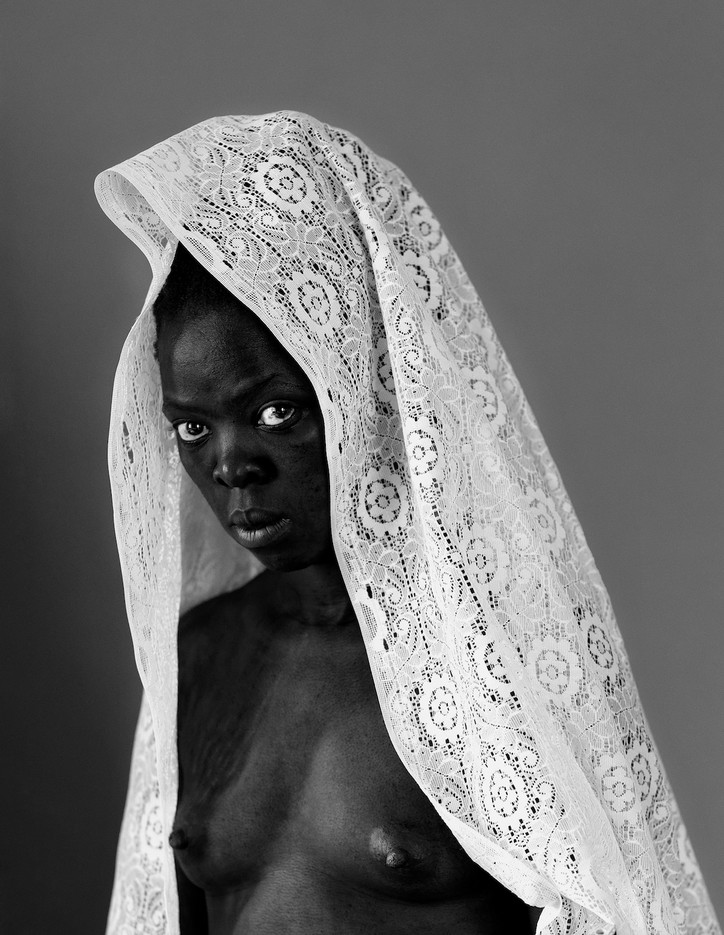
When did it open?
Odi September the 13th... It’s the largest contemporary African art museum in the world, [and] the biggest and the first on the continent.
Zanele And also, it has queer content... Whereas in other instances you will find the biggest places they are unfinished, they have many phobias, if not xenophobia, if not afrophobia, lesbophobia, or homophobia, those phobias exist in many of the museums, but that one - it has us in there. I have a room of my own of my own there.
So this is more about your actual photographs, how do you choose the objects that you incorporate in your photographs? How do those - do they just find you?
Zanele Objects are us. All of the objects form us. We are the objects. So like that scarf you’re wearing, it’s apart of you. Are you feeling comfortable right now? And warm right? It’s lovely. I use a lot of materials in my work, but I first think of the black body as as perishable, or the body as meat.
Odi It is perishable, it gets eaten by worms. It’s going to be like any other piece of meat, it’s going to be smoked, and then it’s going to be… foul.
Zanele And then you become a piece of organic food. This is the body. Then I use material that’s harmful to the environment, like plastic, then it speaks to global warming, then it speaks to trash, which is somebody’s treasure, so I use the trash and make it my treasure for some aesthetic of some kind, so for people to say, ‘oh this is beautiful, I don’t believe you used that,’ we see these things every day. These are mundane kinds of materials we commonly use, and then to use it in a photo, and when people say, ‘wow it’s beautiful.’ It’s not about beauty, it’s about the historical element that is attached to it and the politics of the material in spaces and symbolism, etc, etc. In one image I have a fro, like Odi Diva, then Odi D has a song on the politics of hair, and the touchy touchy way people are feeling who do not have our hair texture, they want to fidget, but they’re curious.
Odi My dad would say, we are cutting your hair. You’re shaving it bald because we don’t want you walking around with "k*****" hair.
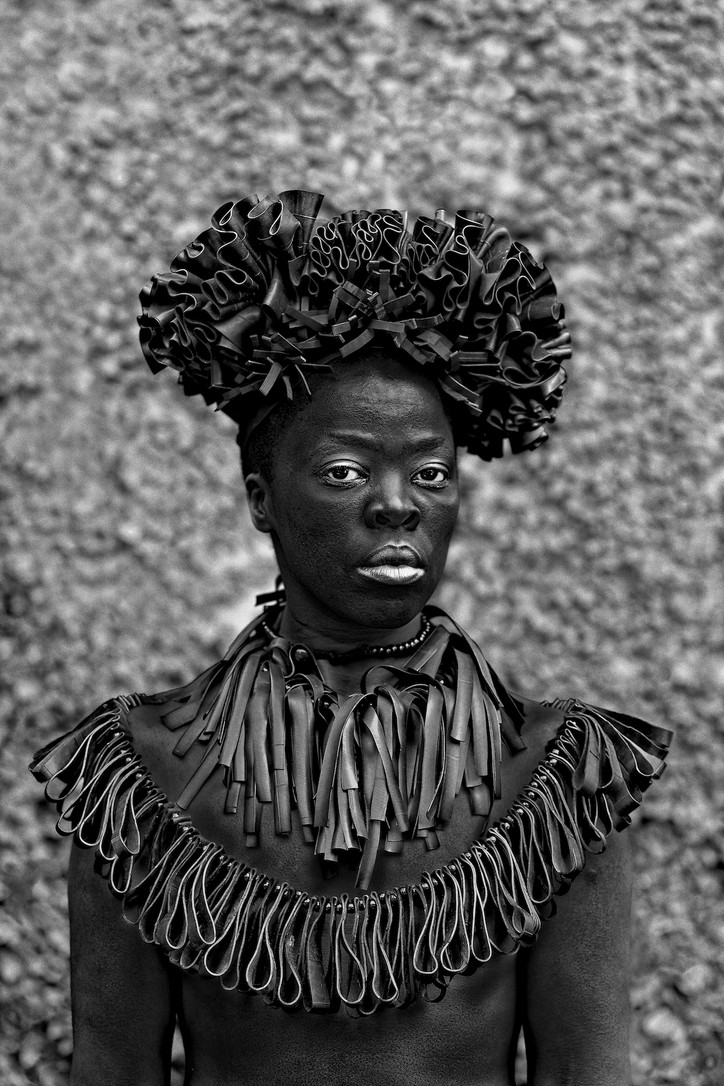
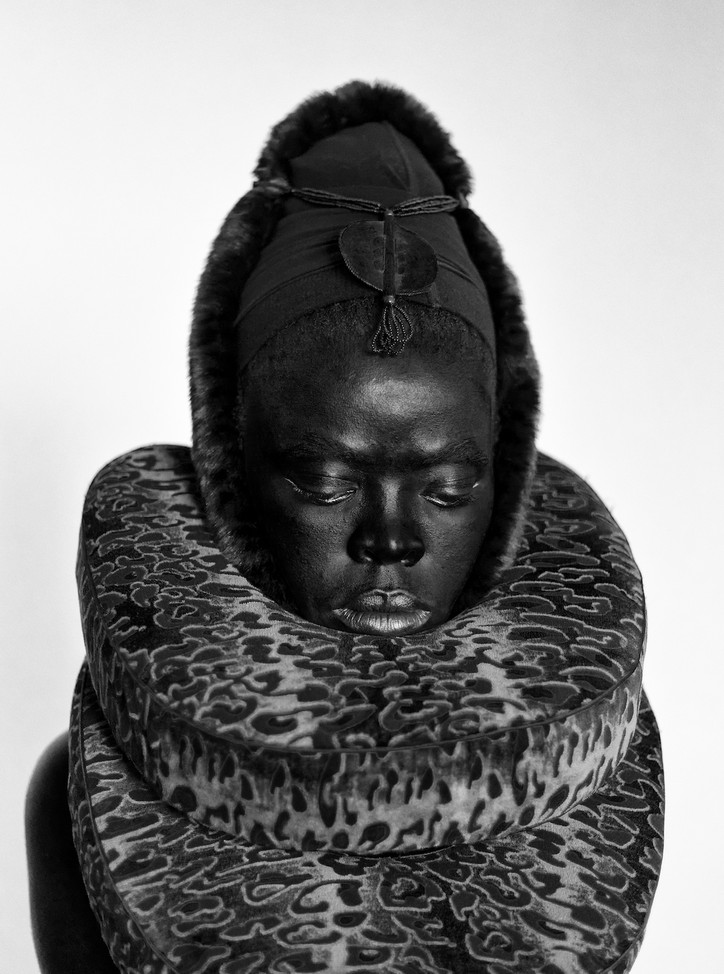
So, that’s the term that would be similar to 'afro', or...?
Odi So you know the word "n*****", which is not a good word, this is our not-good word. It’s in Afrikaans, so it’s a Dutch derivative.
What constitutes that?
Odi Because it’s kinky.
Zanele Yes, the pencil test.
What’s the pencil test?
Odi Because we have so many cultures mixed in, the “melting pot,” they had to differentiate as to how white you are. So if a pencil could go right through your hair, then you might just qualify to be white. This is what happened in the colored community, it would separate families because some could pass for white and were delivered the privileges, and some couldn’t. That’s pretty universal in terms of the black, African diaspora, the lighter you are the better you are.
It’s like the brown paper bag test in the 30s.
Odi Yes it’s pretty much the same thing. It’s like fairness, like… (sings an African song). The bride is beautiful colored.
Zanele Let me show you the hair we are talking about. These are like horns. This is my hair. This has to do with the dowry, the horns, the wealth. Odi: The cow. In African culture in order to have the child that’s in the woman’s womb you need to adopt her to the family, you pay an adoption fee so the girl can become apart of the family. This is lobola, this is the fee that you pay to show that you can look after this girl. You pay it to the family of the woman you want to marry. It’s a bride price, you see.
So how is that connected to the photograph?
Odi Because before it was the bank notes, it was cows. Hence the reference to horns.
Do they still reference that in marriage ceremonies?
Zanele Of course... But besides even that, these are not just black images. So listen to this, if a girl is not a virgin, it means less cows. If a girl is still a virgin, which means there’s a lot of things going on before like virginity inspection by the family, the father especially gets eleven cows because she’s still good.
And this is current, this currently happens?
Zanele Yes!
Odi The Zulu King, before the reed dance, has to do the check.
So would you say that these traditions inform a lot of your work?
Zanele Of course, these are about history, you know, and who we are. These are not just photographs, this is knowledge shared.
